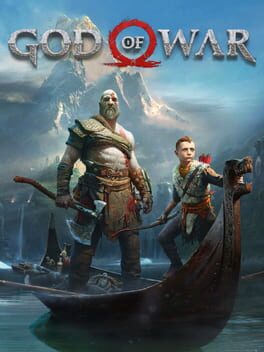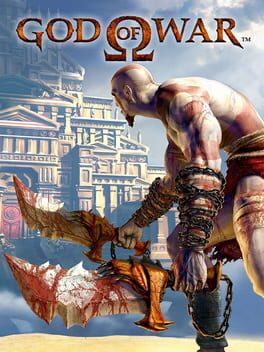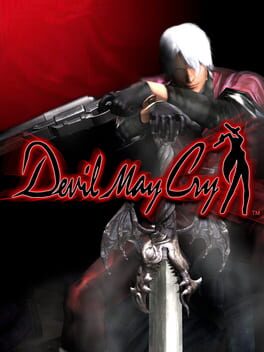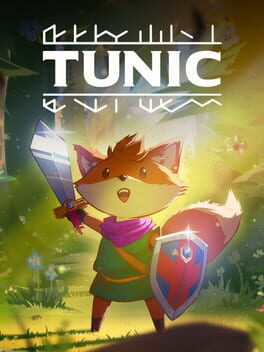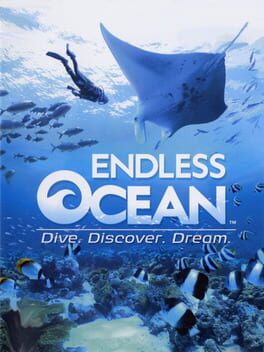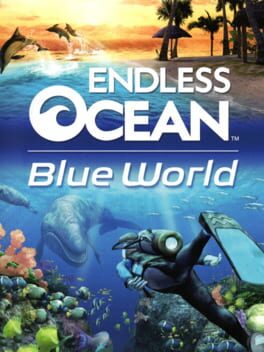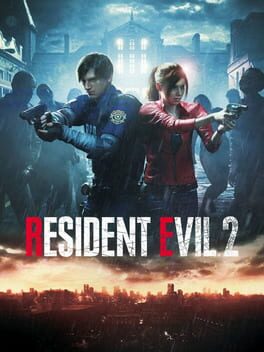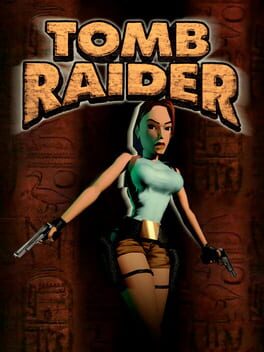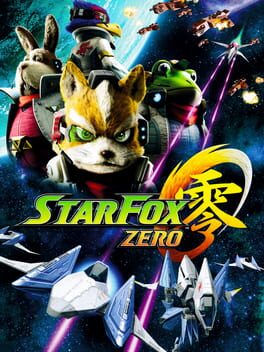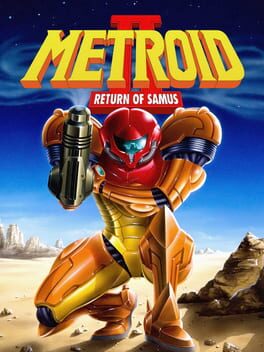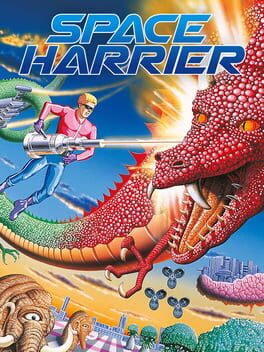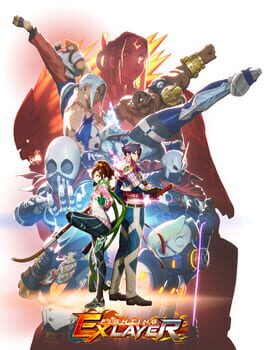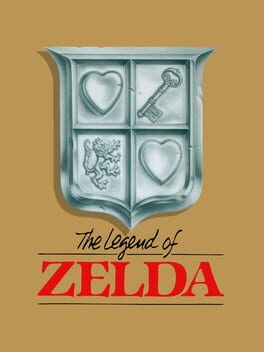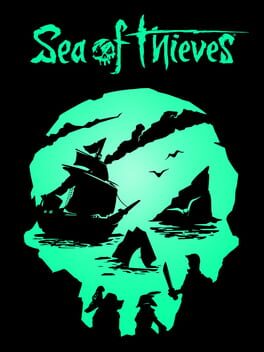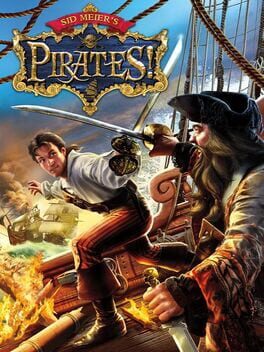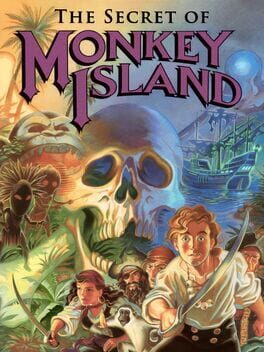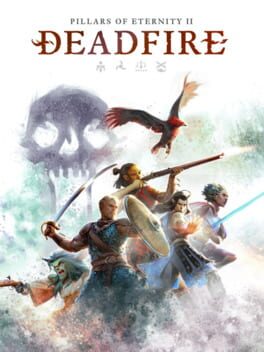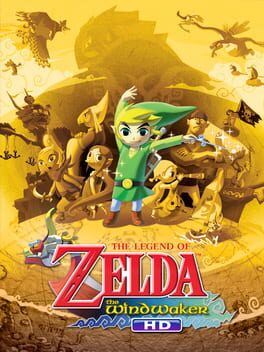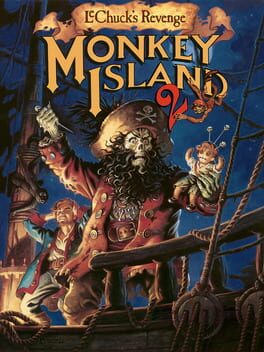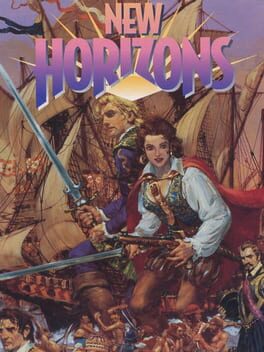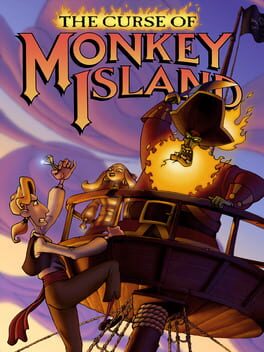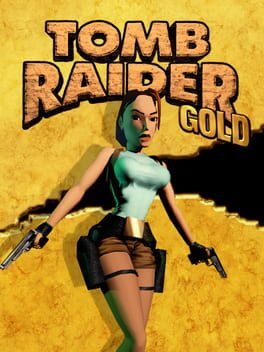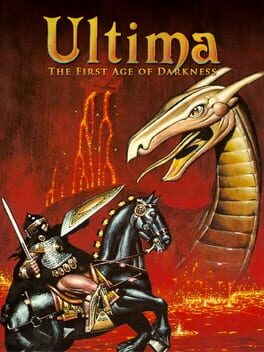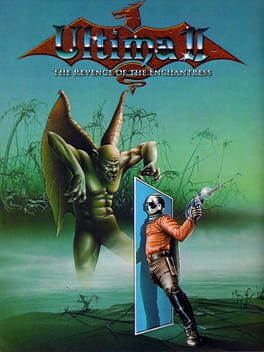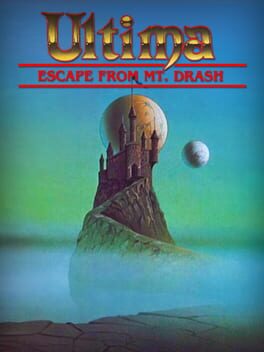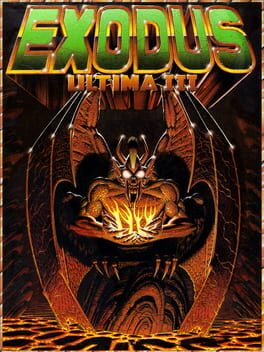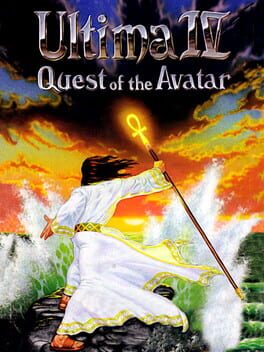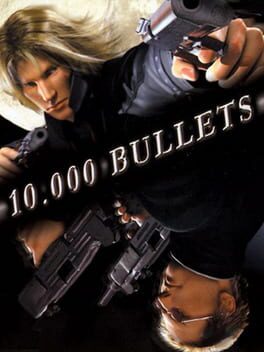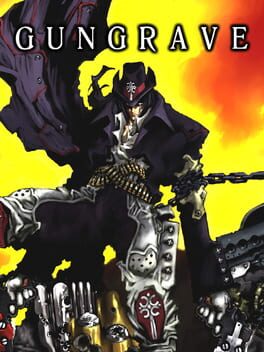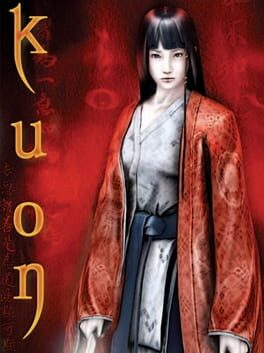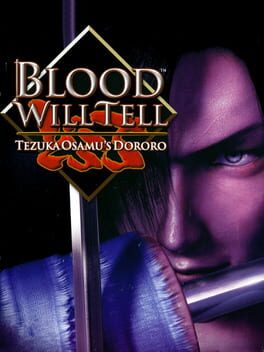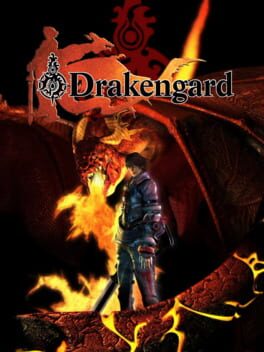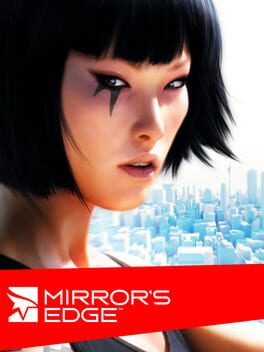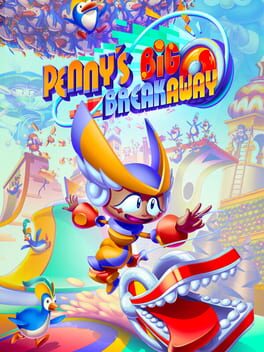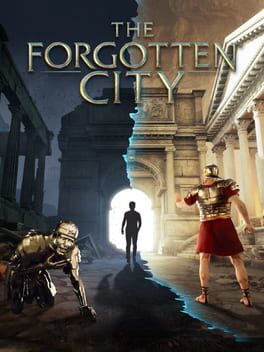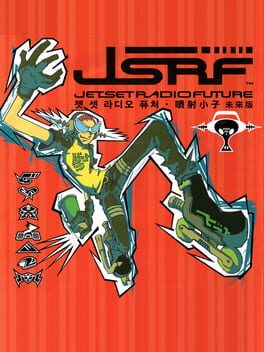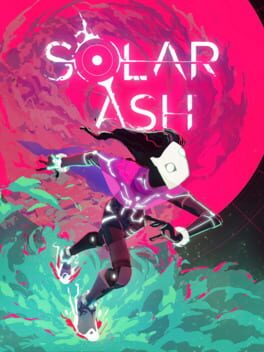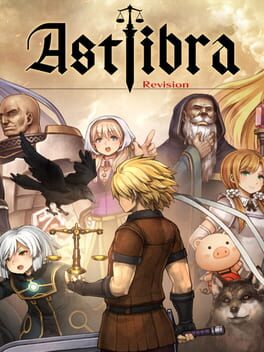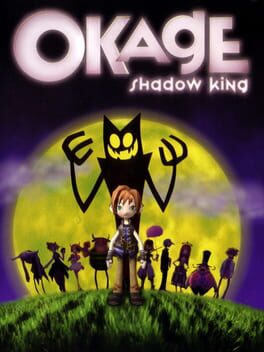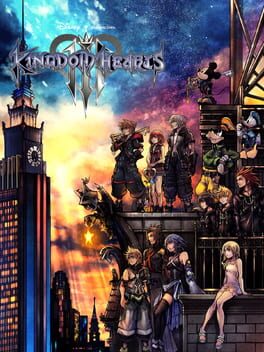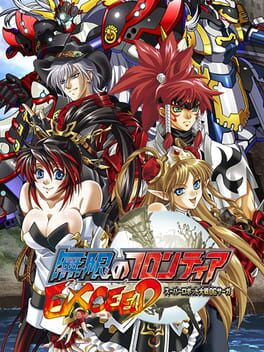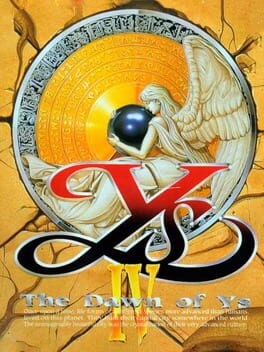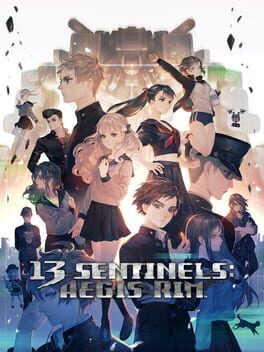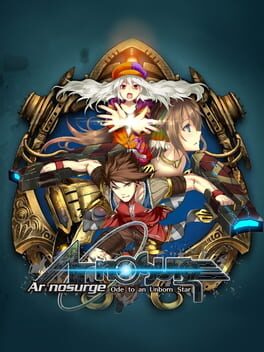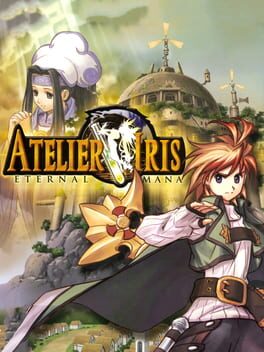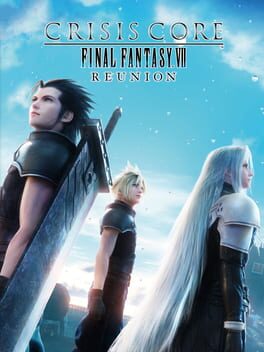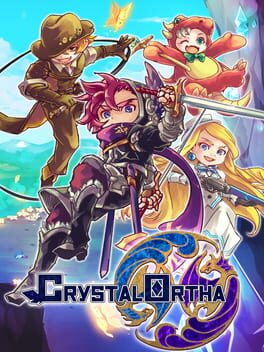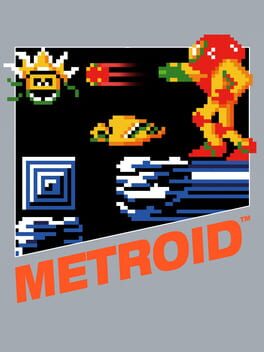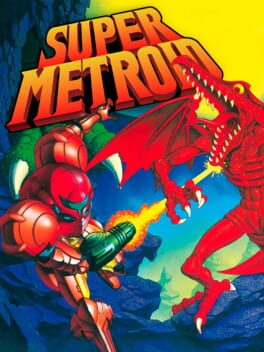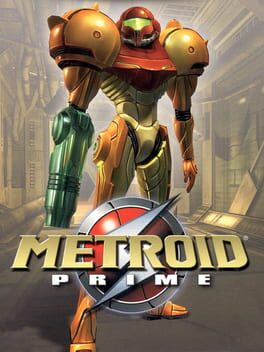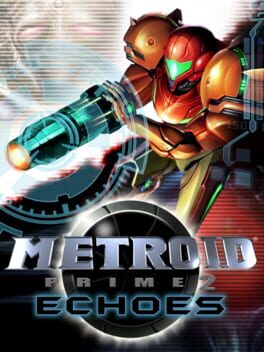mutyumu
1341 reviews liked by mutyumu
God of War
2018
You see the funny thing about this game is that, if you're not a die hard character action game fan, you may think this game is great, maybe a masterpiece for it's story and Kratos relationship with his son.
If you are a character action game fan you most likely think this game is an overrated clunky piece of dogshit video game. With it's new direction being a complete compromise to the series roots.
I'm somewhere in the middle. It looks great and I do like the story, unfortunately I can't exactly say God of War is a fun game. It's got a horrendous camera that feels the need to always be behind Kratos to keep the cutscenes single-shot rule. It never feels like the encounters are designed around the claustrophobic camera. Not that it matters anyways, since the game feels painfully easy, with challenge only coming from tankier health sponges, or in a horrid twist, the need to swap between weapons to take out certain enemies, similar to the awful enemy design in the DmC Reboot.
It's hard to exactly talk about this game without comparing it to other games or even to it's own series, since it both apes on other successful games while also being a soft reboot except also a direct sequel to God of War 3. What baffles me is the fact God of War took on this new direction except it doesn't really do anything new with it. Which is the main problem with God of War. I'm not opposed to a series trying something new, it's when a series does something new by taking ideas from other series and half-assing them is what I'm opposed to. So it turns what should be a great new adventure onto a sea of new ideas into something I've been on before, in better, more focused forms.
The thing is I can't exactly say God of War is a bad game. It's a perfectly fine product with gorgeous visuals and a neat story, but I can never shake the feeling that I've played it before.
Because of that, allow me to list off games that God of War reminded me of that you should check out instead:
Dark Souls
Devil May Cry
God Hand
Kingdom Hearts
The Last of Us
Yakuza
And, get this one:
The God of War Trilogy.
If you are a character action game fan you most likely think this game is an overrated clunky piece of dogshit video game. With it's new direction being a complete compromise to the series roots.
I'm somewhere in the middle. It looks great and I do like the story, unfortunately I can't exactly say God of War is a fun game. It's got a horrendous camera that feels the need to always be behind Kratos to keep the cutscenes single-shot rule. It never feels like the encounters are designed around the claustrophobic camera. Not that it matters anyways, since the game feels painfully easy, with challenge only coming from tankier health sponges, or in a horrid twist, the need to swap between weapons to take out certain enemies, similar to the awful enemy design in the DmC Reboot.
It's hard to exactly talk about this game without comparing it to other games or even to it's own series, since it both apes on other successful games while also being a soft reboot except also a direct sequel to God of War 3. What baffles me is the fact God of War took on this new direction except it doesn't really do anything new with it. Which is the main problem with God of War. I'm not opposed to a series trying something new, it's when a series does something new by taking ideas from other series and half-assing them is what I'm opposed to. So it turns what should be a great new adventure onto a sea of new ideas into something I've been on before, in better, more focused forms.
The thing is I can't exactly say God of War is a bad game. It's a perfectly fine product with gorgeous visuals and a neat story, but I can never shake the feeling that I've played it before.
Because of that, allow me to list off games that God of War reminded me of that you should check out instead:
Dark Souls
Devil May Cry
God Hand
Kingdom Hearts
The Last of Us
Yakuza
And, get this one:
The God of War Trilogy.
God of War
2005
For what a high point of storytelling in games the franchise it spawned has come to be seen as, it feels underdiscussed how effortlessly God of War married its narrative with its mechanics on its very first try. What I’d wager is the peak of this entire series in that regard’s present here, specifically during the final boss, at which point there’s a masochistically difficult segment where Kratos has to defend his family from an army of himself and can quite literally sacrifice his life (bar) to restore theirs.
While a sequence near the end of Chains of Olympus comes close in terms of catharsis, I find this section especially interesting not just for its music being a top 5 track in any action game or the 1:1 emotions it induces in both the player and Kratos, but also because of how neatly it wraps him up at the very start of what went on to be arguably Sony’s premier franchise, to the point of being its guinea pig for expanding outside of its own consoles. It’s become unfortunately common to mischaracterise the Greek games’ Kratos as an avatar of mindless anger, this being just one example of any number of counterpoints to that notion which existed as early on as his debut (you’d hope the introductory cutscene alone would’ve been enough). Were he not a compelling leading man with just enough depth to maintain interest over the course of a game relatively lengthy for its genre, it’s doubtful that he would’ve become probably the closest thing PlayStation’s ever had to its own Mario or Master Chief, if not in terms of sheer recognisability or an on-brand colour scheme then certainly in being a distilment of his parent company’s core draw – in this case, complex scenarios made accessible to as wide an audience as possible by way of presentational, cinematic flair.
God of War achieves this partially through its fixed camera, which is a huge boon to its sense of adventure. Even something as mundane as trotting down what’s functionally a featureless corridor feels momentous whenever it’s paired with a rampaging Ares in the background occupying two thirds of the screen, or when it pans out to the point of Kratos being barely visible to drive home the gargantuan scale of places like Pandora’s Temple and the Desert of Lost Souls. The in-game levels encompassing these areas are only so big, but the bespoke camera angles do a stellar job of selling the impression that there’s something more out there on the horizon (accentuated by how they enable the level designers to hide important collectibles out of view) and stoking the player’s imagination, the latter of which increasingly seems to be a lost art in games of production value comparable to this as they hone in further and further on photorealism. This isn’t to suggest that God of War isn’t likely trying to look as realistic as the PS2’s hardware allowed for – the amount of real-time reflections, volumetric water effects and NPCs running around during crowded scenes are pretty insane considering how smoothly it runs – but I do think this is a case where technical limitations helped bring about the best of both worlds, where it’s simultaneously cool how lifelike it can often look while still leaving room for mental abstraction on the player’s part.
The other half of the equation’s the combat system. The lack of any pesky directional inputs coupled with the Blades of Chaos’ gigantic range help reduce the skill barrier a decent margin by de-emphasising positioning (though not nearly to as egregious an extent as the Norse games’ slip ‘n’ slide attack magnetism) and technicality, but it’s still got layers which this surface-level simplicity belies. The hardest difficulty particularly necessitates a balancing act, where you’ll be pretty much constantly weighing up whether to get in as many weak hits as possible and milk the combo counter for all the red orbs it’s worth or to risk chucking out slower, stronger attacks to quickly dispatch the most annoying enemies. It has a few of those for sure; if you can believe it, Sony Santa Monica actually put my reaction to a gorgon appearing onscreen into one of these games. The enemy roster’s largely good and makes creative use of Greek myth, but other, more minor irritations do occasionally rear their heads in soldiers’ unreactable wakeup attacks and how there doesn’t seem to be any reliable way to predict when sirens or minotaurs decide to respectively dodge or block.
Despite these blemishes and the Blade of Artemis feeling slightly undertuned for being the only other weapon in the game, God of War’s combat system has enough other strong points to outweigh them. The grab system in particular deserves more attention than it tends to get and could stand to be cribbed from more often by other action games. At the press of a button and depending on the context in which they’re used, grabs are a tool for combo extension, crowd control, orb maximisation, invincible instakills (at the cost of receiving no orbs) and non-mandatory QTEs which net you specific resources from certain enemies should you need them; complemented by the wealth of magic abilities Kratos obtains over the course of the game, it enables more room for experimentation than one’d expect. It also can’t be stressed enough how great it is at fulfilling a power fantasy; the chunkiest hitstop in all of Athens and a striking amount of enemy hit reactions makes feedback on attacks feel fantastic whether you’re ripping into entire hordes or a single measly harpy.
As sobering as this being my 50th review was the fact that, according to my memory card, the last time I’d played God of War on original hardware seems to have been 2008. Gamer carbon dating places that roughly in our own equivalent of ancient Greece, but as with the real deal, we shouldn’t arrogantly look down on that era. There’s a tendency in gaming and other media to purport that standards only ever increase as time passes, but even in the face of the leaps and bounds action games have come on in the time since God of War’s release, I reckon there’s still not many that outdo it in all of its key selling points, one of which includes the ability to put Kratos in a cow costume. It remains not just the game I might not’ve gotten into my favourite genre without, but also a solid exemplification of why you probably shouldn’t trust anybody who uses “like a PS2 game” as a pejorative. Or, in my experience, the first sentence of this old promo video. The second one’s true enough, though.
While a sequence near the end of Chains of Olympus comes close in terms of catharsis, I find this section especially interesting not just for its music being a top 5 track in any action game or the 1:1 emotions it induces in both the player and Kratos, but also because of how neatly it wraps him up at the very start of what went on to be arguably Sony’s premier franchise, to the point of being its guinea pig for expanding outside of its own consoles. It’s become unfortunately common to mischaracterise the Greek games’ Kratos as an avatar of mindless anger, this being just one example of any number of counterpoints to that notion which existed as early on as his debut (you’d hope the introductory cutscene alone would’ve been enough). Were he not a compelling leading man with just enough depth to maintain interest over the course of a game relatively lengthy for its genre, it’s doubtful that he would’ve become probably the closest thing PlayStation’s ever had to its own Mario or Master Chief, if not in terms of sheer recognisability or an on-brand colour scheme then certainly in being a distilment of his parent company’s core draw – in this case, complex scenarios made accessible to as wide an audience as possible by way of presentational, cinematic flair.
God of War achieves this partially through its fixed camera, which is a huge boon to its sense of adventure. Even something as mundane as trotting down what’s functionally a featureless corridor feels momentous whenever it’s paired with a rampaging Ares in the background occupying two thirds of the screen, or when it pans out to the point of Kratos being barely visible to drive home the gargantuan scale of places like Pandora’s Temple and the Desert of Lost Souls. The in-game levels encompassing these areas are only so big, but the bespoke camera angles do a stellar job of selling the impression that there’s something more out there on the horizon (accentuated by how they enable the level designers to hide important collectibles out of view) and stoking the player’s imagination, the latter of which increasingly seems to be a lost art in games of production value comparable to this as they hone in further and further on photorealism. This isn’t to suggest that God of War isn’t likely trying to look as realistic as the PS2’s hardware allowed for – the amount of real-time reflections, volumetric water effects and NPCs running around during crowded scenes are pretty insane considering how smoothly it runs – but I do think this is a case where technical limitations helped bring about the best of both worlds, where it’s simultaneously cool how lifelike it can often look while still leaving room for mental abstraction on the player’s part.
The other half of the equation’s the combat system. The lack of any pesky directional inputs coupled with the Blades of Chaos’ gigantic range help reduce the skill barrier a decent margin by de-emphasising positioning (though not nearly to as egregious an extent as the Norse games’ slip ‘n’ slide attack magnetism) and technicality, but it’s still got layers which this surface-level simplicity belies. The hardest difficulty particularly necessitates a balancing act, where you’ll be pretty much constantly weighing up whether to get in as many weak hits as possible and milk the combo counter for all the red orbs it’s worth or to risk chucking out slower, stronger attacks to quickly dispatch the most annoying enemies. It has a few of those for sure; if you can believe it, Sony Santa Monica actually put my reaction to a gorgon appearing onscreen into one of these games. The enemy roster’s largely good and makes creative use of Greek myth, but other, more minor irritations do occasionally rear their heads in soldiers’ unreactable wakeup attacks and how there doesn’t seem to be any reliable way to predict when sirens or minotaurs decide to respectively dodge or block.
Despite these blemishes and the Blade of Artemis feeling slightly undertuned for being the only other weapon in the game, God of War’s combat system has enough other strong points to outweigh them. The grab system in particular deserves more attention than it tends to get and could stand to be cribbed from more often by other action games. At the press of a button and depending on the context in which they’re used, grabs are a tool for combo extension, crowd control, orb maximisation, invincible instakills (at the cost of receiving no orbs) and non-mandatory QTEs which net you specific resources from certain enemies should you need them; complemented by the wealth of magic abilities Kratos obtains over the course of the game, it enables more room for experimentation than one’d expect. It also can’t be stressed enough how great it is at fulfilling a power fantasy; the chunkiest hitstop in all of Athens and a striking amount of enemy hit reactions makes feedback on attacks feel fantastic whether you’re ripping into entire hordes or a single measly harpy.
As sobering as this being my 50th review was the fact that, according to my memory card, the last time I’d played God of War on original hardware seems to have been 2008. Gamer carbon dating places that roughly in our own equivalent of ancient Greece, but as with the real deal, we shouldn’t arrogantly look down on that era. There’s a tendency in gaming and other media to purport that standards only ever increase as time passes, but even in the face of the leaps and bounds action games have come on in the time since God of War’s release, I reckon there’s still not many that outdo it in all of its key selling points, one of which includes the ability to put Kratos in a cow costume. It remains not just the game I might not’ve gotten into my favourite genre without, but also a solid exemplification of why you probably shouldn’t trust anybody who uses “like a PS2 game” as a pejorative. Or, in my experience, the first sentence of this old promo video. The second one’s true enough, though.
Devil May Cry
2001
Tunic
2022
A Ship of Theseus held together by shallow references to greener pastures-- Tunic serves as a reminder that form towers over function in the eyes of many.
Tunic, I've found, serves as a sort of Rorschach test.
You probably discovered it like I did, at one of the many directs that every company seems to throw these days. There are enough out there that it makes my head spin: Sony State of Play, Nintendo Direct, Xbox Developer Direct, Summer Games Fest, Capcom Showcase, Ubisoft Forward, Annapurna Interactive Showcase, Limited Run Games Showcase, Tribeca Games Showcase, EA Play, Devolver Direct, and of course, the titan above them all: the almighty Wholesome direct.
I'm being cheeky rattling off every single one, but consider this for a moment: do you remember where you first saw Tunic? It popped up at a lot of these directs--hell it's probably popped up more than any other game ever has. And considering its seemingly endless promotion followed by immediate success both critically (just having won a DICE award at the time of writing) as well as commercially, it's easy to see Tunic as one of the newest flagbearers for the indie games movement.
But back to the Rorschach test. When you saw one of those thirty direct trailers, what did you think? Did it seem cool? Cute? Atmospheric? Challenging? Or…god forbid…comfy? Your instant reaction to Tunic says a lot about you…But I'll leave that thought as an exercise for you. Well, you and some other loquacious (now that's a billion-dollar word) reviewer. One that'll cite 18th century Irish philosophers and end therantreview by calling you a pervert for enjoying the game or something. I won't know your secrets, but I'll tell you mine: I thought Tunic looked like derivative trite that masked its shortcomings behind a cheap veneer of cute nostalgia.
And so, at least for this review, I've become that guy.
You know the one.
The guy who dislikes the games you love. The dude unwilling to hear your game out on any level, even on its greatest strengths. They'll boil down everything you adore about a game into saying something like "it's just Dark Souls meets Earthbound." Don't you just hate that pedantic bastard? I know I do.
Overworld
So take heart. I'll give Tunic some credit before we begin the fireworks. The game looks nice--at least at a surface level. The music is fine in a vacuum (but even then, it hardly carries a sense of adventure). And beyond that…I suppose the game is all-around functional. I didn't fall through any floors, nor did the game actively try to murder me in real life--which is a plus. Finji and director Andrew Shouldice haven't congratulated my playthrough by mailing me a pipe bomb…although God help me if they ever manage to read this review. In total, you aren't getting scammed out of your money if you buy Tunic, but I'm sure you already knew that.
I recognize that it's a very low bar I’m setting here...but if you asked me if there was anything I actually liked about Tunic…then the answer would be a definitive No. There's really only things that I so deeply hate.
But still, much like how Halo and Manhunt share the same 'M' rating, I wouldn't say that Tunic deserves as much ire as say, Bioshock Infinite or Final Fantasy XIII do. After all, you can only hate a bad indie game so much. It's not like tens of millions of dollars and hundreds of thousands of overworked manhours were wasted here. There's nothing insidious or despicable here from a commercial standpoint. One guy started this project wanting to make his dream a reality--and after several hard years (plus the assistance of a small publisher) he (well, by this point, they) made the dream come true. And that's fine and all, good for them. But there are still many things that I find Tunic stands for in the greater context of the gaming--particularly indie gaming--ecosystem we live in. Both on the side of those who create, as well as those consume and critique…and I guess also the bastards who put on 'directs' too. I might not take issue with the director of the game (please don't mail me a pipe bomb), but the rest of this, I will take issue with.
To start, we should probably deal with the elephant in the room: originality.
It's a given that art shouldn’t have to strive towards pure innovation. Everything we create was inspired by someone else's work. And even before there were artists to take inspiration from, our ancestors merely imitated the natural world around them. Sure, there are those special works that do change the game, but you and I understand the gaussian nature of art: if everything was "special," nothing would be.
So every game can be boiled down to "Skyrim with guns." But good art--the stuff worth going out of your way for--still needs something special about it. There has to be something to separate it from its artistic realtives, even if it ultimately fails to escape its influences.
And it's here that the Rorschach test kicks in again.
Clearly this isn't a hang-up for many people--developers and players alike. How many Castlevania, Mega Man, Dark Souls, Animal Crossing, and yes, Zelda-likes have you seen next to Tunic at these online events? Were you excited for that new quirky Earthbound inspired RPG with a dark edge? That wasn't a rhetorical question: were you? Because if so…that's fine. Beauty is in the eye of the beholder. Stop reading this review and go play Tunic, you'd probably enjoy it. And that's a good thing. You should enjoy more things--provided you aren't getting anyone killed in the process.
But for those of you who are like me--scratching their heads at why someone would want to play a worse version of an extant classic--then you probably also see Tunic as one of the most desperate indie games of the lot. Everything about it--from a surface (and therefore marketable) level--was custom-fit to make you think of better games. For Christ sake just think about the title of the game. Take a look at its box art, it's on this very same webpage right now! I haven't seen an indie game this transparent since the developers of Oddity flat-out named their project Mother 4. It's clear as day that Shouldice wants you to think of Zelda when you buy his game--so I'll be thinking about that while I review it too.
Once you actually see the game in motion, you'd very quickly understand Tunic's other major design pillar: Dark Souls. Not even just in terms of combat--parries, dodge rolls and all that--but instead also in terms of narrative design, world building, and holistic gameplay design too. Hell, if it were just knocking off the dodge rolls, then I'd only charge it with the misdemeanor of ripping off Bastion. But merely taking minor inspiration isn't quite Tunic's style. We are stripping the walls down to the copper here.
Hints on How to Destroy Creativity
So yes, Tunic is in essence Dark Souls meets Zelda, with some other obvious influences thrown in as well. You might think this combination is sensible--both are fantasy/action-adventure games after all--but closer scrutinization reveals fatal problems when merging the two.
First and foremost is a sense of tone. Dark Souls and Zelda might belong to the same genre when you squint, but they are polar opposites in holistic presentation. Sure, graphics and art style are one obvious comparison, but we can go further than that. Zelda games are often beloved for their quirky and memorable NPC cast while Souls games are mainly (and intentionally) devoid of life beyond a scant few characters. There's certainly been a few NPCs that have managed to gain traction--you can probably guess the one in particular I'm thinking about, but you're mainly playing a Souls game to experience the lack of community, not the presence of it. Compare that to iconic Zelda titles like Wind Waker or Majora's Mask and you'll start to see the point here. Even Breath of the Wild, which clearly takes after Souls games, still has a metric ton of NPCs and character interactions that drive a clean narrative.
Tunic is taking from Dark Souls here wholesale--meaning we're dead-on-arrival when it comes to building a real sense of the 'world' or the characters that occupy it. Locations are primarily empty and filled with text we can't understand (well, without a lot of elbow grease, but we'll get to that later). If you're lucky you might also find an NPC... who you also can't understand.
The entire world of Tunic feels incredibly sparse and dull as a consequence. It certainly doesn't help that it's lacking in the depth of lore that keeps a Souls game interesting and, more importantly atmospheric. I don't feel like I'm trawling through the solemn ruins of a civilization fallen from grace--piecing together the forgotten past like an archeologist wandering onto Troy. Instead, I feel like I'm wandering through a legion of half-empty rooms fit for nothing but tedious dodge rolling.
The game also fails to capture any true sense of 'adventure' that most beloved Zelda games have. Without any characters or clearly understood stakes to drive us, there's no real motivation for most of the game's runtime. Are we saving the world? Saving 'the princess?' Protecting our friends? Finding ourselves? There's just nothing. What little drive we do get comes too little and too late--a decision that feels more like rubbing salt in the wound than anything else. Even the original The Legend of Zelda gave us a text crawl and a plot insert in the manual to prep players for (what was at the time) a grand adventure. Tunic instead opts to backload everything way past the point of initial interest…all in the name of preserving its godawful manual…A manual that we'll get to in due time.
The Legend of Zelda ABCs
But now that I've described in world of Tunic in concept, how does it actually feel when you're roaming through it? Frankly, it's yet another chaotic mess. The game manages to combine the worst of Zelda's ideas with some of the most uninspired and underbaked indie isometric game design principles I've ever seen. It's genuinely nothing short of stunning. I have to commend the developer for making the world feel so miniscule yet such a chore to navigate at the same time. A feat that's doubly impressive when you consider just how small Tunic's world is.
The game is, of course, displayed with a 3/4th isometric perspective. This is a design choice with a long list of well-understood strengths and weaknesses--the style has been around nearly as long as the entire industry has. And yet…it feels like Shouldice failed to take any of that into consideration when designing Tunic.
The game aspires for the best of 2D Zelda's world design--the Link to the Past and Link's Awakening type of world. But its isometric qualities, combined with some head-scratching design choices, create a chaotic world that quickly becomes a pain to explore. If you want a basic overview of what I mean, pull up the Tunic overworld and compare it to the overworld from Link's Awakening while I talk.
Beyond the immediate difference in size, one thing that should catch your eye is just how vertical Tunic is compared to Zelda. And sure, you can certainly get much higher in Zelda…but when you think about the ratio between flat ground and elevations shifts, Tunic has it beat tenfold. Combine this with the fact that many paths are dead ends, and you get some of the most frustrating world traversal I've ever seen. You often find yourself walking from dead-end to dead end, or staring at the path you'd like to go down, only barred by the slightest difference in elevation you can't reconcile. It's completely lacking in all the finer nuances that makes exploration in a Zelda game feel so natural. Once again made impressive considering how tiny Tunic's world actually is--even compared to a Game Boy title from 1993.
You eventually receive a hookshot-esque ability to aid in world traversal, but that's only really a band-aid for the problem. For one, it doesn't magically reconcile the frustration you feel when you don't have the hookshot. For another, it doesn't fix the harsh truth: flat Tunic's overworld is dull at best--usually featuring only a few uninspired enemies to fight and basic structures to explore. It's not something you're going to be remembering like your first time in Hyrule.
And so, we once again return to the conceptual problems of cribbing the world of a Souls game without actually matching any of its interesting qualities. There's nothing to do, no one to see, no interesting places to visit, and no stakes to be had through exploration. The world is merely a vehicle to perform middling dodge-roll Bastion combat and solve "puzzles"--something you and I are going to have to tackle here in a second. Simply put, there is no adventure here, only frustration and boredom. An extra demerit for a soundtrack that is fine, but ultimately uninspired indie-game fanfare--ill-fitting for inspiring player wanderlust.
Basic Wisdom
But if there's one thing that any fan of Tunic will never fail to bring up, it's the game's oh-so-inspired puzzles and game manual. For many, this seems to be the game, or at least all they're willing to actually talk about from it. But it's here, maybe more than anywhere else, is where that Rorschach test comes in. More specifically, how each and every one of us interprets the concept of a puzzle as well as what we value in terms of interactive 'challenge.' So let's get down to brass tacks, shall we?
Tunic's puzzles are, in two words: purposefully obtuse. Which might make you scratch your head if you haven't played the game. Why would a developer want their puzzles to be perceived as obtuse? Isn't that usually seen as a negative trait? To understand, you have to go back to the root of Tunic's design philosophy: it mindlessly mimics what it thinks are the 'best' traits from other games. People love the classics--or, more realistically, pay lip-service to actually loving them--and everyone says hose games are Nintendo Hard, right? So if everyone loves Zelda, and Zelda is apparently obtuse, then we need to be obtuse too! Right? Well obviously Shouldice was wise enough to know that wouldn't quite fly in 2022. So once again, things were altered to fit the Tunic mold: for the worse yet again.
Tunic's puzzles are obtuse in ways that attempt to mimic the supposed 'spirit' of retro games, while giving you affordances to ensure you can feasibly solve them better than a kid in 1989 stuck with a copy of Simon's Quest. What sort of affordances you might ask? Well, mainly just a copy of Nintendo Power. Or to be more specific, the shittiest issue of Nintendo Power ever produced.
Players can collect 'pages' of the game's own instruction manual while exploring the world, (in theory) building up their knowledge of the game's mechanics and world as they adventure. But, as usual, Tunic shits the bed with the same mindless design quirks as before. For one, the manual isn't actually written in English (or your language of choice)…well at least not always written in English. It's written in English when it feels like it. Otherwise, it's written with the same cryptic language the NPCs and world signage use. And when I say 'otherwise,' I mean most of the fucking time.
So you're given this manual, that's apparently trying to mimic the feeling of cracking open a new Nintendo Power back in 1988, and you can't even read the damn thing.
Why? Because Tunic can't help itself.
You ever play one of those shitty indie horror games? I'm not going to name any names, but you know the ones. They're usually inspired by Creepypasta, found-footage cinema, and more recently Analog Horror. Consequently, much like their often amateur influences, these games can't help but pack in 'spooky' moments even when they don't make any goddamn sense. They're more focused on getting a cheap jump out of you than they are in designing a coherent (and frankly, engaging) world. Just think about all the Analog Horror videos out there. How many of them ruin what might be an otherwise interesting premise with some of the stupidest attempts to scare you with spooky text and freaky faces every five seconds? Even when those moments totally kill the mood, tone, or general pacing that would have greatly benefited their project? They just can't help themselves.
And in that same spirit, Tunic can't help itself either. It decided that it needs to pay homage to retro games ('pay homage' having more quotes around it than an antisemitic rant on 4chan) in every way possible. And it its mindless and desperate pursuit of this goal, all coherent design considerations get caught in the crossfire. So fuck it, the manual is apparently a bilingual disaster moonlighting as Schrodinger's instruction manual.
Have you considered the philosophical considerations here? The manual is…inside the game? When I pause the game, I see myself playing the game through a CRT? Why are there handle scribbled notes in the manual sometimes? Are we doing some postmodern meta-narrative play here? If so, why? What are we trying to say? Or better yet, what does all of this meaningfully give me as a consumer of this art? Well don't you worry buddy. I'm sure I sound like a broken record by now…but luckily for you, Shouldice seemingly failed consider any of this shit, so I guess you really don't have to either.
But I think you know the real answer as much as I do. It's the same 'why' used as a means for all of these godawful ends: nostalgia. Or to be more accurate (and to paraphrase James Murphy of LCD Soundsystem fame): "Borrowed nostalgia for the unremembered eighties." It's meant to make you feel 'warm and fuzzy' inside. To give you some bastardized sense of wonder from your childhood. And for that, I truly hate Tunic. It's bereft of any real or admirable qualities. Its only real aim is to imitate and remind us of other, better things. It truly has nothing to say with its own merits, on any level.
And you gotta understand, I agree this would sound nitty-picky as fuck if not for the fact that the entire fucking point of the game is the goddamn manual. Without it, we only have yet more uninspired indie slop that lies somewhere on the Bermuda Tringle between Bastion, Zelda, and Dark Souls. So we're going to have to scrutinize the game for these elements--god knows the combat design offers nothing worth mentioning. So anyways, back to the actual puzzles.
When I said 'purposefully obtuse' earlier, I didn't just mean that you'd require a game manual to solve puzzles--although you will need the manual to solve the most important puzzles in the game. I also meant it in the sense that Tunic's puzzles will challenge critical players in ways they probably haven't been challenged in for a long time. Not because the puzzles are particularly difficult. I mean, the notion of a puzzle's 'difficulty' is incredibly vague and abstract to begin with. But instead, I mean that these puzzles will challenge you because they'll make you consider why we even have game puzzles in the first place.
Think about that for a second. Genuinely. Why do we even have puzzles in games? How come I have to figure out which wall to bomb in a Zelda dungeon? What torch to light? What lever to pull? What exactly am I getting out of these experiences--both from the perspective of recreational play and critical engagement? There's no correct answer to this question--it's for all of us to decide. But I think it's important to consider your own reasons why, and how games like Tunic (do or don't) fail to live up to those expectations.
For some, the fun is in the art of the puzzle itself. It doesn't really matter the context--the how or why of the thing. All that matters is how much you have to wrestle with the bastard to suss out the answer. For these kinds of people, the joy of the puzzle is all about the thrill of the hunt. You probably aren't one of these kinds of people--but you definitely know at least a few folks like this. The kinds of people who do complex logic puzzles, crosswords, riddles, and whatever else on a daily basis. The kind of person who'd probably also annoy you with those puzzles on a daily basis too (sorry Joel, but I know you ain't readin' this shit anyways). Sometimes this kind of person grows up to be a good mathematician or scientist--and that's cool. We all oughta respect that desire and pursuit for the unknowns of human knowledge.
But I don't fit into that category, despite my background in mathematics, language, and computer science--all fields fraught with these sorts of people. At least, I don't fit into that background when it comes to how I value games. Let me explain why.
I find that puzzles are often the weakest part of any game I play. And no, it's not because I get my ass kicked by them…although sometimes I do get my ass kicked by them. It's because nearly all puzzles are, by definition, built upon layers and layers of arbitrary societal constructs and very fuzzy logic. Puzzles are made by humans, for humans. Which means that many of them will have lots of local cultural and societal values inherently encoded into them.
How to Make an Adventure Map!
You ever heard of Nuclear Semiotics? Now there's a real interesting puzzle if there ever was one. If you're not aware, I'll clue you in real quick. Sorry to turn into the guy I was just describing above, but this'll all make sense in a moment.
So we've got all this nuclear waste that we've been making over the last century. Obviously that stuff isn't going anywhere anytime soon--and we're probably going to keep making more of it too. You obviously know nuclear stuff is extremely deadly…but how did you know that? Are there any actual innate traits of nuclear waste that tell you that it's deadly? No, there aren't. You only know it's going to kill you because someone else told you that. So let's say its eight thousand years from now: everything you know and love is gone--all the language, culture, beliefs, and (most importantly) scientific knowledge…gone. Some blokes go digging where they shouldn't and end up stumbling upon nuclear waste. How do we, the great people of 2023--kickin' back at home and playing Tunic--leave behind messages to warn people waaaaaaaaaaaaay into the future to stay the hell away from nuclear waste and not get everyone killed?
It might sound like a simple problem to you, but it's actually a damn hard one. You could give some simple answers like using 'basic symbols' and 'universal warning signs' to deter people, but what the hell is universal or basic? We can't even begin to predict what culture is going to be like thousands of years from now. Want to use a symbol of a skull? There are already cultures that associate skulls with positive concepts. A nuclear radiation symbol? We made that shit up in the 40s--it has no clear or inherent meaning baked into it. For all intents and purposes, the people of the far-flung future might as well be total aliens to us. And when you sit down and try to actually tackle this problem, you realize how difficult it is to get across just about anything without a clear sense of shared culture that bind together meaning.
So let me tie this back to video game puzzles. Think about that one puzzle you fucking hate. You know the one. The one that kept you going for hours. The one that pissed you off so much that you wouldn't even look it up. That bastard was challenging you--and you were not about to back down. Maybe after hours of trying every possible solution, every possible option, you finally get it…at long last. Maybe you overlooked some now obvious part of the puzzle, or maybe it really was just total horseshit.
But consider this: even if that puzzle was totally unfair to you, was it really bullshit for everyone else? Even for the person who designed it? Obviously the answer is "no." That puzzle made perfect sense to someone else. I bet if you had a friend in the room watching you struggle, they probably figured the damn thing out in ten seconds. Hell, you've probably been in that seat before too. Puzzles are a part of our collective culture. They only start to make sense when you can intuit how the designer might be thinking. You have to be on the same wavelength. Obviously we're never synced up with perfectly, but there's enough overlap to make everything work, even if it means there's a lot of jank in the process. But without shared culture, almost all puzzles begin to fall apart. Remember: even logic itself is an arbitrary human construct--one bound by cultural and societal understandings. Remember: numbers ain't even real. Only the most brilliant of puzzle games (Tetris, Portal) can come close to escaping these issues--because they rely on basic human intuition (geometric and physical, in this case).
So consider the nightmare scenario: a game where every single puzzle was one of those puzzles for you, and only you. Your buddy beat the game in six hours while it takes you sixty. Let's call this game Kings Quest. You can probably take one or two of those types of puzzles in a game--even if it greatly detracts from your enjoyment--but do you think you could really stomach a whole game's worth? How would you even review it? Would you just spend the entire write-up saying the puzzles were 'unfair' or 'arbitrary?' What will you have to say when KingsQuestLover77 leaves a snide comment implying you're a 'fucking moron?'
I'm making a worst case scenario here to illustrate my point, but let's also consider the opposite case too. Imagine, if you will, the Perfect Puzzle. Capital P and all. What exactly does that puzzle look like to you? Maybe you can't picture the actual puzzle itself, but we can flatten the question down into a lower dimension to make things easier: What does the difficulty curve of the Perfect Puzzle look like to you? How long would it take you to solve it? How much would you have to struggle to make it feel worth it? What parts of your intelligence is that puzzle challenging? What's your reward for solving the puzzle?
It's not hard to understand why I'm so critical of puzzle design when you think about these conceptual launching points. Puzzles are a minefield with infinite pitfalls. A real philosophic nightmare. You might be starting to wonder how I manage to stomach any games focused on puzzles. I mean, I've given plenty of Zelda games the five-star rating--how does that make any sense? And more importantly, why do those games get a pass while Tunic gets the unhinged review? I think the answer is pretty simple. Zelda games (and the like) don't actually have 'real' puzzles--they just make us think we're solving puzzles.
Zelda is--obviously--an adventure game series set in a fantastical world. That distinct sense of grand fantasy and adventure helped Zelda stand out from the crowd back in the day. You could probably say the same thing about similar successful competitors like Dragon Quest and Final Fantasy too. Jumping around as Mario or doing sick flips in Excitebike was cool, but it was undeniable that audiences would want something deeper. Something more…immersive. Games are an expression of play, after all--and it would only be a matter of time before role playing took off in the (home console) video gaming space too. But Zelda, of course, was different. While DQ and FF had you fumbling through turn-based battles and RPG stat screens to enact a sense of heroic combat, Zelda immersed you directly into the fights. It certainly wasn't revolutionary in this regard--it stood on the shoulders of greats like Tower of Druaga and Hydlide--but it presented the action role-playing game with a level of ease, polish, and immersion that we hadn't seen up to that point.
In other words, Zelda took something that was inaccessible to us--being a bold adventurer braving uncharted territory--and allowed the average joe to really pretend they were one. It's easy to understand that we're not actually kicking ass when we press a single button to engage in life-or-death combat (although goddamn it, it can really feel like it sometimes). But it's perhaps a little less obvious to understand how Zelda has crafted dungeon puzzles to elicit the same response from us. Instead of requiring any true problem solving--like we'd consider a good riddle or puzzle would--Zelda (and its derivatives) only ask you to go down a (very short) list of possible answers for any given problem. Take Ocarina of Time for an example. When confronted with a problem, the answer is always going involve one of a few things:
1) Bombing a wall
2) Lighting a torch
3) Hitting an object
4) Pressing a switch
5) Moving a block/object
6) Killing an enemy
With this very short list, we've probably cracked 90% of the puzzles you'd find in any Zelda game. If you expand the list to ten possibilities (to include a few of the funkier edge cases) we'd probably get nearly every puzzle in every game in the entire franchise.
Obviously all puzzles in a computer game exist within a bounded set of possible answers--(real) computers aren't infinite after all. But Zelda has successfully maintained decades of broad appeal (critically and commercially) by basically removing the critical thinking element from the equation. Just as you press a single button to slay your foes, you don't actually find ingenious solutions to puzzles--you're just role playing as a guy who does.
And so, Zelda pulls off an impressive hat trick--It makes you feel smart for solving puzzles, but in reality, you were performing a very shallow knowledge check. A knowledge check so simple that even a small child could figure it all out. This might be exactly why you aren't into Zelda…but wouldn't you agree that's the beauty of the series? It's a franchise that just about anyone could enjoy. It solves the philosophical quandaries I laid out by essentially side-stepping the question entirely. They aren't really puzzles--or at least not really good puzzles. They just require you to learn a simple design language--one that's so intuitive that just about anyone could become fluent within hours. Kids and casuals and get on board easily, perhaps finding a moderate challenge, while hardcore players can enjoy the simple and smooth satisfaction of blastin' through puzzles like you're some kind of gamer Einstein.
My distinction between Zelda puzzles and a 'good puzzle' might still seem fuzzy to you. Let me try and elaborate with another point. A 'good' puzzle wouldn't be something everyone could solve…right? If a puzzle had a success rate of near 100%, then we'd all probably find it too trivial to enjoy. A good puzzle is non-trivial--meaning that plenty of people are gonna get stumped in the process. Let's say for the sake of argument that…I don't know…the puzzle has a solve rate of 40%. This would be all well and good in real life--but what about in games?
Think about it for a second.
Imagine you're back in the time period Tunic wishes it were found in. Maybe you're too broke to afford a copy of this month's Nintendo Power and you don't have any friends at school who bought the same wack-ass Zelda knock-off you did. No one is going to help you when that almighty 40% filter makes you call uncle. So what do you do? You either drop the game entirely or suffer until you brute force a solution--maybe coming to hate the game in the process. This is, by most game designers' account, a failure of a puzzle. Now imagine a game that's filled with 'em. Suddenly, you're back to the nightmare scenario I laid out just a few minutes ago. When you get stumped by a puzzle in game…that's it, game over.
When you chew on this thought for a second, it doesn't take long for something to become obvious: Non-trivial puzzles--which must contain 'good' puzzles as a subset--are a self-destructive aspect of any genre of video game.
Consider this: which genre was the poster boy for 'real' puzzles? There's only one good answer: the point-and-click/adventure game. If you're somehow reading this review fifteen years from now, I wouldn't blame you for missing the answer. You probably haven't played any games in the genre. Why? Well, because as the legendary Old Man Murray (later known as the writing duo behind Portal) pointed out in their 2000 writeup Death of Adventure Games, the adventure game genre "committed suicide" about twenty years before my time of writing. How? By endlessly aspiring to greater heights of puzzle complexity--pissing off nearly everyone in the process.
This isn't to say that games can't be bereft of conventional puzzles--but they often have to take a clear back-seat to other elements that strongly draw gamers in. The short lived point-and-click game revival of the 2010s was carried on the back of recognizable properties (Walking Dead, Back to the Future, Fables, Minecraft) and a heavy emphasis on narrative--not puzzle-based qualities. Sure, Gabriel Knight certainly had a narrative…but I think I know why most people were playing Walking Dead instead. Even then, it only took a few years before this entire ecosystem also collapsed in on itself. It seems at this point that the only games completely able to escape this black hole are the Ace Attorney, and Danganronpa series. But once again I'd argue these games are being carried entirely by a vivid cast of characters and memorable narratives, not their puzzles. Forget sex--fandoms sell, baby.
It's clear then that I'm saying Tunic doesn't follow that Zelda formula, right? Right. Instead, understanding its puzzles requires us to confront the final third of Tunic's influence brew. Its secret sauce, if you will: Fez.
Go North Young Man!
Man, remember Fez? It's been over a decade since that game took the industry by storm. And when I say 'by storm' I mean like a goddamn hurricane. It feels silly looking back on it now, but you'd swear Phil Fish's short and tyrannical reign on the throne of indie gamedom was going to blow away everything not welded to the foundations. Of course, Fish's antics--combined with the toll that Fez took on him--would lead to his self-exile. But it's wild to think about just what sort of state the gaming world (and the internet at large) was in back then. Considering the heinous shit we've seen from other 'old man indie' luminaries like Notch (Supernazi) and Johnathan Blow (Antivaxxer) in recent years, it even makes me nostalgic for the time when the most controversial thing to come out of an indie dev's mouth was "suck my dick."
But anyways…Fez. Do you like Fez? I really don't. Well, to be fair, I haven't played it since launch--and I wasn't even a teenager then--so who knows what the hell I'd think about it today. But outside of a charming art style (one teetering on the edge of fatigue in a 2012 indie game era), I really didn't take away much from the game. But no matter who you are--a Fez enjoyer or not--I can guarantee you'd agree that Tunic is no Fez. Much like the other two key pieces of this puzzle, Tunic barely manages a pale imitation of Fez. On average, Tunic's idea of exploration and puzzle solving is to just have you walk behind objects that obscure your vision (thanks to the isometric perspective) and…whabam! You found a thing! Sometimes it even breaks its own rule--randomly rotating the camera when you get to an arbitrary location to reveal a bunch of hidden stuff where you couldn't see it. It doesn't really make sense in isolation--considering you have no meaningful control of the camera anywhere else in the game. But when you consider the Fez angle, it starts to make a lot more sense: the game is half-assedly biting Fez just like it half-assedly bites Zelda and Dark Souls.
Of course those are just the trivial puzzles--not the real star of the show. For beating this game…really beating it, is going to require a lot more out of you. Much like Fez, Tunic turns to proper puzzles and bona fide code deciphering in its final hours. And here, we return to the problem of the proper puzzle. Many of Tunic's greatest brain-busters are puzzles for the sake of puzzles--not puzzles for the sake of gameplay. Most of them require you to recognize cyphers described both within the game's manual and within the game's world--making you connect the dots between the two in order to solve a given riddle. It might sound interesting, but it usually just adds up to recognizing that a door, material, or wall has a geometric pattern on it. Then you stand by the pattern, input that same pattern on your d-pad (a-la an old-fashioned a cheat code) and…puzzle solved. It might sound trivial, but it's often not--requiring you to hyper scrutinize details of the world in order to infer the patterns required for solving the puzzle.
And don't get me wrong, if you're a fan of real puzzles then you'll probably get a kick out of this--much like you probably would with Fez and a handful of other games. But I still think there's a catch, even if you actually are one of those people. I'm almost certain you'll find the puzzles ultimately lacking compared to ones you'd find outside of video games. Frankly the fact that it is a video game is what holds them back. Not to say that a game couldn't achieve those pure and spectacular puzzle 'highs' that you desire--but it probably wouldn't have nearly enough mass appeal to get the game made in the first place. Games ultimately have to water themselves down in order to see any real release. After all, if the puzzles don't have a high solve rate, then people will probably hate 'em. I know I probably will.
But at some point Tunic's puzzles start to teeter on absurd for the rest of us. I'm out here scrutinizing the patterns of flowers on the ground--furiously mashing inputs into my d-pad trying to guess exactly what the hell the game wants out of me. And the whole time I'm thinking…
"All of this is in service of what, exactly?" Why am I trying to decipher nearly every object in the game for arbitrary patterns that may or may not exist? What am I actually getting out of this?"
It's not making me feel more like an adventurer exploring some mysterious dungeon, nor is it making me feel particularly smart either. It's a puzzle for the sake of the puzzle--and I'm just not into that, nor do I think most other people are either.
This all culminates with perhaps the most ridiculous puzzle I've ever encountered in a game--the final puzzle needed to unlock Tunic's 'true ending'. In essence, it requires you to examine every single page of the manual for a symbol that looks like an arrow sign (or some other indication of directionality). After discovering all one hundred of these symbols, you need to stand before a door and input all one-hundred directions in a row, perfectly. That might not sound that bad to you…but when you're sitting there, trying to actually input the answer…it really sells the absurdity of it all. It'll start to make you go insane if you're not careful.
I'm the kind of guy who gets mixed up if I have to pull a specific digit out of a string of ten numbers. Imagine trying to make sure you didn't misinput direction number fucking 74 out of 100. Moreover, imagine accidentally writing down the wrong direction for only one of the fucking hundred you need input. It's nothing short of pure madness.
Seriously, it's the kind of puzzle that'll bring your faith in gaming to its knees. You'll wonder what you're doing there. You'll wonder why you're struggling through all of this. You'll wonder what the gain is. And I don't just mean some sort of superfluous in-game reward--you'll start questioning what the hell you're doing manipulating a plastic toy when you've only got so many seconds left on this fleeting earth. And for that, I'm almost impressed in Tunic's ability to induce a gamer existential crisis like it was David Lynch's Rabbits.
Bravo.
And so, it's here that Tunic fails more than in any other design category. The puzzles are either too trivial or too arbitrary--with both ends of the spectrum being a shittier version of Fez. More importantly, none of the puzzle solving is really being done in the name of the game--it's being done for the sake of the puzzle. Of course, most players--including many fellow reviewers on this same page--will never have to reconcile with any of this. They either played the base game (without attempting to get the proper ending) or simply looked up solutions with a walkthrough. I've certainly used my fair share of walkthroughs before--sometimes it'd be a fool's errand not to--but you have to ask yourself something here. If I'm not playing Tunic for these puzzles--the entire purpose of the game's manual, it's central gimmick--then what the hell am I here for? The boring and uninspired world? The hyper-derivative and banal combat? The cute fox? In every sense, Tunic has failed me.
The Magic and the Mystery
But to simply fail would only get you so much ire--at least from me. There are plenty of failures that won't illicit my backloggd version of the Ninety-Five Theses. Tunic goes one step further. There's something deep in there--something that reviles me beyond its collection of underthought influences. It's really the entire framing of the thing that sends me over the edge.
Tunic isn't just another indie game--although it is also just another indie game. Tunic is really a twisted ode to retro gaming, childhood wanderlust, and nostalgia.
And I say 'twisted' because Tunic doesn't operate with the premises underlining the real retro games it seeks to emulate. It's instead based on the underinformed perception the general public has of those games. And when I say general public, I don't just mean your mom and pop. It seems this category has grown to encompass people within the gaming industry that I hoped would know better--professional critics. Hell, based on the response on this page, it looks like it also includes much of the enthusiast community as well.
A common selling point I've seen thrown around is how Tunic brilliantly interweaves its manual into the game--something we tackled in the previous section. But another point of praise I've seen rewarded is how it so authentically captures the magical feeling of being a child playing an NES game like Zelda. It 'understands' the retro gaming condition and masterfully interweaves it into the game's world and puzzle design. Tunic, in a sense, becomes retro gaming. Or perhaps it even goes beyond retro gaming and becomes a towering love letter to the 'magic' of gaming.
This line of thinking makes a sort of sense. But it falls apart when you scrutinize it for more than five seconds. Let's try to consider for a second where this supposed 'difficulty' came from--that dreaded Nintendo Hard.
Console game designers were primarily coming directly from the arcade industry--and the veterans among them came from the electromechanical amusement industry, a group preceding video gaming itself. It comes as no surprise then that arcades absorbed the concept of difficulty curves from their big brother electromechanical games. Specifically, EM games taught video gaming about the art of the quarter-muncher. No good carnival game lasts more than a few minutes--and neither would Pac-Man if you weren't particularly good at it.
The very early days of console gaming saw mainly arcade ports, but designers would start to overhaul their design language as they realized the virtues inherent to home gaming. This great transition would be a time of reckoning for many--as game designers were unsure of what was 'too hard' or 'too cryptic' considering the sharp change of venue. After all, if you were essentially being given infinite 'free play' access at home (once you bought the damn thing at the local Sears), so how much difficulty was really too much? It was a venerable wild west--one that would rise and fall roughly during the height of the Famicom's success. Or--to be more American-centric--during the introduction of the NES to innocent, unsuspecting American children.
One thing was certain though--a lot of games from this period were total junk. There really wasn't much in the way of 'baseline' quality for many consumers (and designers), so just about anything went. It wasn't just the fault of publishers like LJN or Konami's shell company Ultra Games either. Nintendo's own games sometimes wouldn't make the cut for international release. So if even developers like Tezuka were going insane, then who would stick their neck out for the little guy? It ended up being the marketing and PR department's job to smooth over these rough spots. And so, publications like Nintendo Power (or the now-infamous Nintendo Power Line) were created, mythical figures like Howard Philips and Gail Tilden were immortalized, and game manuals were fastidiously designed to support kids and provide the last line of defense from angry parents demanding refunds.
But you gotta remember that these games--the types that James Rolfe and co. would later immortalize--were really more the exception than the rule. If you don't believe me, go check any list of the best-selling NES games and how many games you find associated with this mythos. Hell, the king of them all--Simon's Quest--couldn't even crack the top 75 best-selling NES games. The reality is unfortunately a lot less interesting: you'll find five Excitebikes or Kung-Fus for every Teenage Mutant Ninja Turtle. More importantly, you'll see fifteen Ice Hockeys for every Zelda. The world of 'retro game' that Tunic invents--and that players swear to remember--didn't really exist as a cohesive ecosystem in the first place. Games outside of Zelda that get associated with the 'magic and mystery' of fantasy lore--Dragon Quest, Final Fantasy, etc.--basically sold next to nothing in the states. Dragon Quest, (or Dragon Warrior as it was retitled in the US) did so poorly that Nintendo of America had to start randomly shipping copies to kids for free in hopes that they would get hooked on it. I'm sure you can guess how well that strategy worked.
But you know what? Maybe that's being a little too nitpicky of me. Zelda did exist, after all. It's one of the ten best-selling NES games too--despite getting it's ass whooped by Duck Hunt and being given a run for its money by the likes of Dr. Mario. So why don't we narrow down the lens of scrutiny to just Zelda then? Tunic is just a few slight visual changes away from being charged with copyright infringement anyways, so let's pit the two against each other in the ring.
If you're still reading, it won't surprise you to hear that Tunic also fails to reasonably emulate the Zelda experience in any notable way. If you want to get a better idea of what I mean, pull up the Legend of Zelda game manual and the Tunic manual too.
There appears to be a lot of similarities from a surface level--both manuals start off with a plot overview, basic controls, and some general mechanics. But, if you're old enough to have enjoyed game manuals you'll probably recognize that's nothing particularly unique to Zelda or even adventure gaming.
Things start to get interesting in the later portions of the manual. In the case of Zelda, a lot of time is spent painstakingly explaining nearly every aspect of the game in clear prose--the overworld, dungeons, enemies, items, interactions, etc. It might seem like overkill now, but you gotta remember: this was a different time. It was a time where customers might have never touched a video game before slapping down $49.99 on yours (that's nearly one hundred and forty big ones today!!). You kind of had to pour over each facet of the game in meticulous detail. And so, Zelda clues you in on every single enemy--what they are, what they do, and how they're gonna fuck you up. Not to mention info on how every single item works in clear English. There is no mystery here, it's damn near encyclopedic.
But of course, items and enemies are only one part of the equation. The exploration is where it's at anyways, right? Well, yes and no. In truth, Zelda does what every other adventure contemporary did in this era. Fearing a negative response from novice and confused gamers, the Zelda manual just straight up tells you exactly where to go and what to do for a sizable chunk of the game's content. The locations of the first two dungeons are spelled out for you perfectly--as well as complete maps of those dungeons: locations of items, enemies, and all. The overworld map is nearly filled out in its entirety. It even shows you the location of about half the dungeons and almost every other location of interest.
Of course that isn't the whole game--it's perhaps 70% of a game guide--but I think the difference is clear. Zelda is about immersing yourself in the role of a hero on a grand adventure. The series has continuously updated and expanded every facet of itself--just compare Zelda to Ocarina to Breath of the Wild--but it's always been oriented around that core idea. Everything Zelda does is in service of that idea. And don't get me wrong. Man, does it often stumble to reach those great heights. Be it the tedium found in Wind Waker's sailing or in being forced into Link's boot wardrobe every five seconds in Ocarina's infamous Water Temple. But despite all the hangups, I've never once felt that Zelda has deviated from that noble goal. From the characters, to the worlds, to the dungeons, to the combat, to the puzzles--Zelda has only found meaningful competition through its clunkier, nerdier western cousin The Elder Scrolls.
And yet, with Tunic, I feel none of that. I only feel an insistence on a meta-awareness of gaming itself. A juvenile postmodern framing. A smokescreen that tries to distract from the game's clear shortcomings.
But here's the rub…what really gets me:
Tunic's referential nature only serves to position criticisms of the game--narrative or mechanical--as a feature of retro gaming itself.
It's not that the story is underbaked, or that the world is non-existent, or that the combat is tedious, or that the puzzles are trite--it's actually just a reference to a different video game! Of course, don't ask Shouldice, Finji, or their lawyers what those specific references actually are…but I think you get the idea.
It's actually pretty crazy when you think about it. Not only were these adventure games not even that representative of retro games as a whole--Tunic fails to even represent the few adventure games it claims made up the era. Hell, more than that: what it takes from those few games are the worst elements of those games and the surface-level aesthetics that bind them together. It's as if Shouldice saw the infamous Tornado puzzle in Simon's Quest or Link's roleplay of Moses in The Legend of Zelda and confused his 'how (not) to make a good game' notebooks.
But now that I've laid all this down, lets return to my original question: why do we even have puzzles in games? Based on what I've said, I think the answer for Zelda is clear--it's to deepen the fantasy/adventure role-playing experience. You could argue that Tunic is also using puzzles to perform a sort of role play though--the nostalgic role-playing experience.
That's right. If games like Zelda and Dark Souls are all about stepping into the shoes of an adventurer exploring a grand world, Tunic is about stepping into the shoes of a child exploring games like Zelda or Dark Souls for the first time.
That's kinda fucked, innit? It's culture eating itself--the worst elements of lazy postmodern art. It's metanarrative without anything substantial to say or any real emotions to explore. It just wants to abuse the monkey part of your brain that reminds you of your childhood--or at least the good parts of it. I don't know about you, but I hate that shit. What would you rather be: Link, rippin through Hyrule and kickin' ass? Or a child failing to input a one-hundred fucking string cheat code just to see an ending about how your fox mommy loves you? I'll take the here-and-now over the cheap nostalgia any day.
As full-time mob boss and part-time gamer Tony Soprano once said:
"'Remember when?' is the lowest form of conversation."
Bet you weren't expecting to see a fucking Sopranos quote in the middle of a Tunic review, were ya?
Underworld
Beyond being trite, Tunic manages to bring down retro gaming too. It reifies a rich and complex history into a few minor points that read more like slights than praises. It also fundamentally misunderstands what makes the classics classic: the intelligent use of abstraction, the immediacy of gameplay, the mechanical focus, the player/avatar cohesion/immersion, and the constant desire to break boundaries.
A great game is like any other great piece of art--it comes with no reservations. It doesn't matter that Metropolis is a near hundred years old black and white silent film, or that Ferdowsi wrote Shahnameh a thousand years ago--good art is good art is good art.
Contemporary media can often give us tunnel vision. There's a reason historians like to wait for their subjects to be 'good and dead' for analysis. But underneath all of the pomp and circumstance is a set of mechanical, thematic, aesthetic, and narrative ideas. Doesn't matter if you're dodging a big ape throwing barrels or clawing your way through Seattle on a crafting-based-stealth-action-open-world-narrative-heavy-third-person-over-the-shoulder-shooter revenge quest in Ultra-8K 144FPS glory. One is Donkey Kong and one is Space Invaders with many…many coats of paint thrown on top.
Don't get me wrong, that isn't meant as a dig towards modern games (although there's a billion other reasons to slight The Last of Us: Part II). There's still plenty of new games that I would call high points --albeit found more-often-than-not in the indie scene. I'm more slighting the notion of a 'retro game' in itself. It's a notion that I think most people--casual, hardcore, and professional--have bought into hook, line, and sinker. A notion that often boils down many great pieces of art as 'old, plain, and simple.' The type of game Nintendo throws in for free with your online subscription. The ones you'll load up and play for five minutes before going back to whatever rouge-like-open-world-gatcha-survivors-asynchronous-battle-royale-souls-like-idle-dad-based-narrative-as-a-service game you're into at the moment.
And so, Tunic becomes a Rorschach test one last time:
When you look at 'retro games,' what do you see?
When you look at 'modern games,' what do you see?
I want to make it clear that I'm not complaining about the state of things. That's just as pointless as Scorsese (or whoever's done it this week) complaining that Marvel movies aren't 'real' cinema or whatever. I understand that some people are gonna care about the good shit--regardless of its provenance--and some people are only gonna care about what they can buy at Gamestop. That's fine.
My problem is when games like Tunic come along, and actively misrepresent gaming. When they boil it down and present a reality that never truly existed. Or when uncritical professional voices champion that misrepresentation on the written record and inadvertently canonize it. It's a trend I've been seeing a lot in new metacontextual media. Final Fantasy VII: Remake and Half Life: Alyx literally re-write their canon in real time too--shifting public perception of those original games as they go. It's a damn shame for a medium as young and historically misunderstood as our own.
But it's a cycle most people are more than willing to play into. After all, you were there also--watching one of those shitty directs just like I was. I hope you're looking forward to the next uninspired Zelda and Dark Souls 'retro-throwback' that'll have nothing to offer you but some shallow aesthetic pandering and puzzles ripped from the 'MENSA Exam Prep' workbooks.
I also hope the critics out there have just as much fun writing and talking about those games as I presume you and I do reading and listening to them.
Actually side-note: do you really read professional game reviews? Or do you just scan the metacritic page? I'm actually curious who reads these full IGN etc. reviews anymore. These days I feel like I'm more inclined to see what random strangers have to say here than from gaming's fourth estate.
But hell, who am I to talk? I'm doing this shit for free. I just pray in twenty-five years we aren't getting "retro throwback" games based around the indie game golden age that Tunic is proud to be a part of.
But if we've learned anything today, it's that gaming history is more 'doomed to repeat itself' than it is to actually understand itself. So, I'll do my best Laura Palmer impression in the meantime:
I'll see you again in 25 years.
Tunic, I've found, serves as a sort of Rorschach test.
You probably discovered it like I did, at one of the many directs that every company seems to throw these days. There are enough out there that it makes my head spin: Sony State of Play, Nintendo Direct, Xbox Developer Direct, Summer Games Fest, Capcom Showcase, Ubisoft Forward, Annapurna Interactive Showcase, Limited Run Games Showcase, Tribeca Games Showcase, EA Play, Devolver Direct, and of course, the titan above them all: the almighty Wholesome direct.
I'm being cheeky rattling off every single one, but consider this for a moment: do you remember where you first saw Tunic? It popped up at a lot of these directs--hell it's probably popped up more than any other game ever has. And considering its seemingly endless promotion followed by immediate success both critically (just having won a DICE award at the time of writing) as well as commercially, it's easy to see Tunic as one of the newest flagbearers for the indie games movement.
But back to the Rorschach test. When you saw one of those thirty direct trailers, what did you think? Did it seem cool? Cute? Atmospheric? Challenging? Or…god forbid…comfy? Your instant reaction to Tunic says a lot about you…But I'll leave that thought as an exercise for you. Well, you and some other loquacious (now that's a billion-dollar word) reviewer. One that'll cite 18th century Irish philosophers and end the
And so, at least for this review, I've become that guy.
You know the one.
The guy who dislikes the games you love. The dude unwilling to hear your game out on any level, even on its greatest strengths. They'll boil down everything you adore about a game into saying something like "it's just Dark Souls meets Earthbound." Don't you just hate that pedantic bastard? I know I do.
Overworld
So take heart. I'll give Tunic some credit before we begin the fireworks. The game looks nice--at least at a surface level. The music is fine in a vacuum (but even then, it hardly carries a sense of adventure). And beyond that…I suppose the game is all-around functional. I didn't fall through any floors, nor did the game actively try to murder me in real life--which is a plus. Finji and director Andrew Shouldice haven't congratulated my playthrough by mailing me a pipe bomb…although God help me if they ever manage to read this review. In total, you aren't getting scammed out of your money if you buy Tunic, but I'm sure you already knew that.
I recognize that it's a very low bar I’m setting here...but if you asked me if there was anything I actually liked about Tunic…then the answer would be a definitive No. There's really only things that I so deeply hate.
But still, much like how Halo and Manhunt share the same 'M' rating, I wouldn't say that Tunic deserves as much ire as say, Bioshock Infinite or Final Fantasy XIII do. After all, you can only hate a bad indie game so much. It's not like tens of millions of dollars and hundreds of thousands of overworked manhours were wasted here. There's nothing insidious or despicable here from a commercial standpoint. One guy started this project wanting to make his dream a reality--and after several hard years (plus the assistance of a small publisher) he (well, by this point, they) made the dream come true. And that's fine and all, good for them. But there are still many things that I find Tunic stands for in the greater context of the gaming--particularly indie gaming--ecosystem we live in. Both on the side of those who create, as well as those consume and critique…and I guess also the bastards who put on 'directs' too. I might not take issue with the director of the game (please don't mail me a pipe bomb), but the rest of this, I will take issue with.
To start, we should probably deal with the elephant in the room: originality.
It's a given that art shouldn’t have to strive towards pure innovation. Everything we create was inspired by someone else's work. And even before there were artists to take inspiration from, our ancestors merely imitated the natural world around them. Sure, there are those special works that do change the game, but you and I understand the gaussian nature of art: if everything was "special," nothing would be.
So every game can be boiled down to "Skyrim with guns." But good art--the stuff worth going out of your way for--still needs something special about it. There has to be something to separate it from its artistic realtives, even if it ultimately fails to escape its influences.
And it's here that the Rorschach test kicks in again.
Clearly this isn't a hang-up for many people--developers and players alike. How many Castlevania, Mega Man, Dark Souls, Animal Crossing, and yes, Zelda-likes have you seen next to Tunic at these online events? Were you excited for that new quirky Earthbound inspired RPG with a dark edge? That wasn't a rhetorical question: were you? Because if so…that's fine. Beauty is in the eye of the beholder. Stop reading this review and go play Tunic, you'd probably enjoy it. And that's a good thing. You should enjoy more things--provided you aren't getting anyone killed in the process.
But for those of you who are like me--scratching their heads at why someone would want to play a worse version of an extant classic--then you probably also see Tunic as one of the most desperate indie games of the lot. Everything about it--from a surface (and therefore marketable) level--was custom-fit to make you think of better games. For Christ sake just think about the title of the game. Take a look at its box art, it's on this very same webpage right now! I haven't seen an indie game this transparent since the developers of Oddity flat-out named their project Mother 4. It's clear as day that Shouldice wants you to think of Zelda when you buy his game--so I'll be thinking about that while I review it too.
Once you actually see the game in motion, you'd very quickly understand Tunic's other major design pillar: Dark Souls. Not even just in terms of combat--parries, dodge rolls and all that--but instead also in terms of narrative design, world building, and holistic gameplay design too. Hell, if it were just knocking off the dodge rolls, then I'd only charge it with the misdemeanor of ripping off Bastion. But merely taking minor inspiration isn't quite Tunic's style. We are stripping the walls down to the copper here.
Hints on How to Destroy Creativity
So yes, Tunic is in essence Dark Souls meets Zelda, with some other obvious influences thrown in as well. You might think this combination is sensible--both are fantasy/action-adventure games after all--but closer scrutinization reveals fatal problems when merging the two.
First and foremost is a sense of tone. Dark Souls and Zelda might belong to the same genre when you squint, but they are polar opposites in holistic presentation. Sure, graphics and art style are one obvious comparison, but we can go further than that. Zelda games are often beloved for their quirky and memorable NPC cast while Souls games are mainly (and intentionally) devoid of life beyond a scant few characters. There's certainly been a few NPCs that have managed to gain traction--you can probably guess the one in particular I'm thinking about, but you're mainly playing a Souls game to experience the lack of community, not the presence of it. Compare that to iconic Zelda titles like Wind Waker or Majora's Mask and you'll start to see the point here. Even Breath of the Wild, which clearly takes after Souls games, still has a metric ton of NPCs and character interactions that drive a clean narrative.
Tunic is taking from Dark Souls here wholesale--meaning we're dead-on-arrival when it comes to building a real sense of the 'world' or the characters that occupy it. Locations are primarily empty and filled with text we can't understand (well, without a lot of elbow grease, but we'll get to that later). If you're lucky you might also find an NPC... who you also can't understand.
The entire world of Tunic feels incredibly sparse and dull as a consequence. It certainly doesn't help that it's lacking in the depth of lore that keeps a Souls game interesting and, more importantly atmospheric. I don't feel like I'm trawling through the solemn ruins of a civilization fallen from grace--piecing together the forgotten past like an archeologist wandering onto Troy. Instead, I feel like I'm wandering through a legion of half-empty rooms fit for nothing but tedious dodge rolling.
The game also fails to capture any true sense of 'adventure' that most beloved Zelda games have. Without any characters or clearly understood stakes to drive us, there's no real motivation for most of the game's runtime. Are we saving the world? Saving 'the princess?' Protecting our friends? Finding ourselves? There's just nothing. What little drive we do get comes too little and too late--a decision that feels more like rubbing salt in the wound than anything else. Even the original The Legend of Zelda gave us a text crawl and a plot insert in the manual to prep players for (what was at the time) a grand adventure. Tunic instead opts to backload everything way past the point of initial interest…all in the name of preserving its godawful manual…A manual that we'll get to in due time.
The Legend of Zelda ABCs
But now that I've described in world of Tunic in concept, how does it actually feel when you're roaming through it? Frankly, it's yet another chaotic mess. The game manages to combine the worst of Zelda's ideas with some of the most uninspired and underbaked indie isometric game design principles I've ever seen. It's genuinely nothing short of stunning. I have to commend the developer for making the world feel so miniscule yet such a chore to navigate at the same time. A feat that's doubly impressive when you consider just how small Tunic's world is.
The game is, of course, displayed with a 3/4th isometric perspective. This is a design choice with a long list of well-understood strengths and weaknesses--the style has been around nearly as long as the entire industry has. And yet…it feels like Shouldice failed to take any of that into consideration when designing Tunic.
The game aspires for the best of 2D Zelda's world design--the Link to the Past and Link's Awakening type of world. But its isometric qualities, combined with some head-scratching design choices, create a chaotic world that quickly becomes a pain to explore. If you want a basic overview of what I mean, pull up the Tunic overworld and compare it to the overworld from Link's Awakening while I talk.
Beyond the immediate difference in size, one thing that should catch your eye is just how vertical Tunic is compared to Zelda. And sure, you can certainly get much higher in Zelda…but when you think about the ratio between flat ground and elevations shifts, Tunic has it beat tenfold. Combine this with the fact that many paths are dead ends, and you get some of the most frustrating world traversal I've ever seen. You often find yourself walking from dead-end to dead end, or staring at the path you'd like to go down, only barred by the slightest difference in elevation you can't reconcile. It's completely lacking in all the finer nuances that makes exploration in a Zelda game feel so natural. Once again made impressive considering how tiny Tunic's world actually is--even compared to a Game Boy title from 1993.
You eventually receive a hookshot-esque ability to aid in world traversal, but that's only really a band-aid for the problem. For one, it doesn't magically reconcile the frustration you feel when you don't have the hookshot. For another, it doesn't fix the harsh truth: flat Tunic's overworld is dull at best--usually featuring only a few uninspired enemies to fight and basic structures to explore. It's not something you're going to be remembering like your first time in Hyrule.
And so, we once again return to the conceptual problems of cribbing the world of a Souls game without actually matching any of its interesting qualities. There's nothing to do, no one to see, no interesting places to visit, and no stakes to be had through exploration. The world is merely a vehicle to perform middling dodge-roll Bastion combat and solve "puzzles"--something you and I are going to have to tackle here in a second. Simply put, there is no adventure here, only frustration and boredom. An extra demerit for a soundtrack that is fine, but ultimately uninspired indie-game fanfare--ill-fitting for inspiring player wanderlust.
Basic Wisdom
But if there's one thing that any fan of Tunic will never fail to bring up, it's the game's oh-so-inspired puzzles and game manual. For many, this seems to be the game, or at least all they're willing to actually talk about from it. But it's here, maybe more than anywhere else, is where that Rorschach test comes in. More specifically, how each and every one of us interprets the concept of a puzzle as well as what we value in terms of interactive 'challenge.' So let's get down to brass tacks, shall we?
Tunic's puzzles are, in two words: purposefully obtuse. Which might make you scratch your head if you haven't played the game. Why would a developer want their puzzles to be perceived as obtuse? Isn't that usually seen as a negative trait? To understand, you have to go back to the root of Tunic's design philosophy: it mindlessly mimics what it thinks are the 'best' traits from other games. People love the classics--or, more realistically, pay lip-service to actually loving them--and everyone says hose games are Nintendo Hard, right? So if everyone loves Zelda, and Zelda is apparently obtuse, then we need to be obtuse too! Right? Well obviously Shouldice was wise enough to know that wouldn't quite fly in 2022. So once again, things were altered to fit the Tunic mold: for the worse yet again.
Tunic's puzzles are obtuse in ways that attempt to mimic the supposed 'spirit' of retro games, while giving you affordances to ensure you can feasibly solve them better than a kid in 1989 stuck with a copy of Simon's Quest. What sort of affordances you might ask? Well, mainly just a copy of Nintendo Power. Or to be more specific, the shittiest issue of Nintendo Power ever produced.
Players can collect 'pages' of the game's own instruction manual while exploring the world, (in theory) building up their knowledge of the game's mechanics and world as they adventure. But, as usual, Tunic shits the bed with the same mindless design quirks as before. For one, the manual isn't actually written in English (or your language of choice)…well at least not always written in English. It's written in English when it feels like it. Otherwise, it's written with the same cryptic language the NPCs and world signage use. And when I say 'otherwise,' I mean most of the fucking time.
So you're given this manual, that's apparently trying to mimic the feeling of cracking open a new Nintendo Power back in 1988, and you can't even read the damn thing.
Why? Because Tunic can't help itself.
You ever play one of those shitty indie horror games? I'm not going to name any names, but you know the ones. They're usually inspired by Creepypasta, found-footage cinema, and more recently Analog Horror. Consequently, much like their often amateur influences, these games can't help but pack in 'spooky' moments even when they don't make any goddamn sense. They're more focused on getting a cheap jump out of you than they are in designing a coherent (and frankly, engaging) world. Just think about all the Analog Horror videos out there. How many of them ruin what might be an otherwise interesting premise with some of the stupidest attempts to scare you with spooky text and freaky faces every five seconds? Even when those moments totally kill the mood, tone, or general pacing that would have greatly benefited their project? They just can't help themselves.
And in that same spirit, Tunic can't help itself either. It decided that it needs to pay homage to retro games ('pay homage' having more quotes around it than an antisemitic rant on 4chan) in every way possible. And it its mindless and desperate pursuit of this goal, all coherent design considerations get caught in the crossfire. So fuck it, the manual is apparently a bilingual disaster moonlighting as Schrodinger's instruction manual.
Have you considered the philosophical considerations here? The manual is…inside the game? When I pause the game, I see myself playing the game through a CRT? Why are there handle scribbled notes in the manual sometimes? Are we doing some postmodern meta-narrative play here? If so, why? What are we trying to say? Or better yet, what does all of this meaningfully give me as a consumer of this art? Well don't you worry buddy. I'm sure I sound like a broken record by now…but luckily for you, Shouldice seemingly failed consider any of this shit, so I guess you really don't have to either.
But I think you know the real answer as much as I do. It's the same 'why' used as a means for all of these godawful ends: nostalgia. Or to be more accurate (and to paraphrase James Murphy of LCD Soundsystem fame): "Borrowed nostalgia for the unremembered eighties." It's meant to make you feel 'warm and fuzzy' inside. To give you some bastardized sense of wonder from your childhood. And for that, I truly hate Tunic. It's bereft of any real or admirable qualities. Its only real aim is to imitate and remind us of other, better things. It truly has nothing to say with its own merits, on any level.
And you gotta understand, I agree this would sound nitty-picky as fuck if not for the fact that the entire fucking point of the game is the goddamn manual. Without it, we only have yet more uninspired indie slop that lies somewhere on the Bermuda Tringle between Bastion, Zelda, and Dark Souls. So we're going to have to scrutinize the game for these elements--god knows the combat design offers nothing worth mentioning. So anyways, back to the actual puzzles.
When I said 'purposefully obtuse' earlier, I didn't just mean that you'd require a game manual to solve puzzles--although you will need the manual to solve the most important puzzles in the game. I also meant it in the sense that Tunic's puzzles will challenge critical players in ways they probably haven't been challenged in for a long time. Not because the puzzles are particularly difficult. I mean, the notion of a puzzle's 'difficulty' is incredibly vague and abstract to begin with. But instead, I mean that these puzzles will challenge you because they'll make you consider why we even have game puzzles in the first place.
Think about that for a second. Genuinely. Why do we even have puzzles in games? How come I have to figure out which wall to bomb in a Zelda dungeon? What torch to light? What lever to pull? What exactly am I getting out of these experiences--both from the perspective of recreational play and critical engagement? There's no correct answer to this question--it's for all of us to decide. But I think it's important to consider your own reasons why, and how games like Tunic (do or don't) fail to live up to those expectations.
For some, the fun is in the art of the puzzle itself. It doesn't really matter the context--the how or why of the thing. All that matters is how much you have to wrestle with the bastard to suss out the answer. For these kinds of people, the joy of the puzzle is all about the thrill of the hunt. You probably aren't one of these kinds of people--but you definitely know at least a few folks like this. The kinds of people who do complex logic puzzles, crosswords, riddles, and whatever else on a daily basis. The kind of person who'd probably also annoy you with those puzzles on a daily basis too (sorry Joel, but I know you ain't readin' this shit anyways). Sometimes this kind of person grows up to be a good mathematician or scientist--and that's cool. We all oughta respect that desire and pursuit for the unknowns of human knowledge.
But I don't fit into that category, despite my background in mathematics, language, and computer science--all fields fraught with these sorts of people. At least, I don't fit into that background when it comes to how I value games. Let me explain why.
I find that puzzles are often the weakest part of any game I play. And no, it's not because I get my ass kicked by them…although sometimes I do get my ass kicked by them. It's because nearly all puzzles are, by definition, built upon layers and layers of arbitrary societal constructs and very fuzzy logic. Puzzles are made by humans, for humans. Which means that many of them will have lots of local cultural and societal values inherently encoded into them.
How to Make an Adventure Map!
You ever heard of Nuclear Semiotics? Now there's a real interesting puzzle if there ever was one. If you're not aware, I'll clue you in real quick. Sorry to turn into the guy I was just describing above, but this'll all make sense in a moment.
So we've got all this nuclear waste that we've been making over the last century. Obviously that stuff isn't going anywhere anytime soon--and we're probably going to keep making more of it too. You obviously know nuclear stuff is extremely deadly…but how did you know that? Are there any actual innate traits of nuclear waste that tell you that it's deadly? No, there aren't. You only know it's going to kill you because someone else told you that. So let's say its eight thousand years from now: everything you know and love is gone--all the language, culture, beliefs, and (most importantly) scientific knowledge…gone. Some blokes go digging where they shouldn't and end up stumbling upon nuclear waste. How do we, the great people of 2023--kickin' back at home and playing Tunic--leave behind messages to warn people waaaaaaaaaaaaay into the future to stay the hell away from nuclear waste and not get everyone killed?
It might sound like a simple problem to you, but it's actually a damn hard one. You could give some simple answers like using 'basic symbols' and 'universal warning signs' to deter people, but what the hell is universal or basic? We can't even begin to predict what culture is going to be like thousands of years from now. Want to use a symbol of a skull? There are already cultures that associate skulls with positive concepts. A nuclear radiation symbol? We made that shit up in the 40s--it has no clear or inherent meaning baked into it. For all intents and purposes, the people of the far-flung future might as well be total aliens to us. And when you sit down and try to actually tackle this problem, you realize how difficult it is to get across just about anything without a clear sense of shared culture that bind together meaning.
So let me tie this back to video game puzzles. Think about that one puzzle you fucking hate. You know the one. The one that kept you going for hours. The one that pissed you off so much that you wouldn't even look it up. That bastard was challenging you--and you were not about to back down. Maybe after hours of trying every possible solution, every possible option, you finally get it…at long last. Maybe you overlooked some now obvious part of the puzzle, or maybe it really was just total horseshit.
But consider this: even if that puzzle was totally unfair to you, was it really bullshit for everyone else? Even for the person who designed it? Obviously the answer is "no." That puzzle made perfect sense to someone else. I bet if you had a friend in the room watching you struggle, they probably figured the damn thing out in ten seconds. Hell, you've probably been in that seat before too. Puzzles are a part of our collective culture. They only start to make sense when you can intuit how the designer might be thinking. You have to be on the same wavelength. Obviously we're never synced up with perfectly, but there's enough overlap to make everything work, even if it means there's a lot of jank in the process. But without shared culture, almost all puzzles begin to fall apart. Remember: even logic itself is an arbitrary human construct--one bound by cultural and societal understandings. Remember: numbers ain't even real. Only the most brilliant of puzzle games (Tetris, Portal) can come close to escaping these issues--because they rely on basic human intuition (geometric and physical, in this case).
So consider the nightmare scenario: a game where every single puzzle was one of those puzzles for you, and only you. Your buddy beat the game in six hours while it takes you sixty. Let's call this game Kings Quest. You can probably take one or two of those types of puzzles in a game--even if it greatly detracts from your enjoyment--but do you think you could really stomach a whole game's worth? How would you even review it? Would you just spend the entire write-up saying the puzzles were 'unfair' or 'arbitrary?' What will you have to say when KingsQuestLover77 leaves a snide comment implying you're a 'fucking moron?'
I'm making a worst case scenario here to illustrate my point, but let's also consider the opposite case too. Imagine, if you will, the Perfect Puzzle. Capital P and all. What exactly does that puzzle look like to you? Maybe you can't picture the actual puzzle itself, but we can flatten the question down into a lower dimension to make things easier: What does the difficulty curve of the Perfect Puzzle look like to you? How long would it take you to solve it? How much would you have to struggle to make it feel worth it? What parts of your intelligence is that puzzle challenging? What's your reward for solving the puzzle?
It's not hard to understand why I'm so critical of puzzle design when you think about these conceptual launching points. Puzzles are a minefield with infinite pitfalls. A real philosophic nightmare. You might be starting to wonder how I manage to stomach any games focused on puzzles. I mean, I've given plenty of Zelda games the five-star rating--how does that make any sense? And more importantly, why do those games get a pass while Tunic gets the unhinged review? I think the answer is pretty simple. Zelda games (and the like) don't actually have 'real' puzzles--they just make us think we're solving puzzles.
Zelda is--obviously--an adventure game series set in a fantastical world. That distinct sense of grand fantasy and adventure helped Zelda stand out from the crowd back in the day. You could probably say the same thing about similar successful competitors like Dragon Quest and Final Fantasy too. Jumping around as Mario or doing sick flips in Excitebike was cool, but it was undeniable that audiences would want something deeper. Something more…immersive. Games are an expression of play, after all--and it would only be a matter of time before role playing took off in the (home console) video gaming space too. But Zelda, of course, was different. While DQ and FF had you fumbling through turn-based battles and RPG stat screens to enact a sense of heroic combat, Zelda immersed you directly into the fights. It certainly wasn't revolutionary in this regard--it stood on the shoulders of greats like Tower of Druaga and Hydlide--but it presented the action role-playing game with a level of ease, polish, and immersion that we hadn't seen up to that point.
In other words, Zelda took something that was inaccessible to us--being a bold adventurer braving uncharted territory--and allowed the average joe to really pretend they were one. It's easy to understand that we're not actually kicking ass when we press a single button to engage in life-or-death combat (although goddamn it, it can really feel like it sometimes). But it's perhaps a little less obvious to understand how Zelda has crafted dungeon puzzles to elicit the same response from us. Instead of requiring any true problem solving--like we'd consider a good riddle or puzzle would--Zelda (and its derivatives) only ask you to go down a (very short) list of possible answers for any given problem. Take Ocarina of Time for an example. When confronted with a problem, the answer is always going involve one of a few things:
1) Bombing a wall
2) Lighting a torch
3) Hitting an object
4) Pressing a switch
5) Moving a block/object
6) Killing an enemy
With this very short list, we've probably cracked 90% of the puzzles you'd find in any Zelda game. If you expand the list to ten possibilities (to include a few of the funkier edge cases) we'd probably get nearly every puzzle in every game in the entire franchise.
Obviously all puzzles in a computer game exist within a bounded set of possible answers--(real) computers aren't infinite after all. But Zelda has successfully maintained decades of broad appeal (critically and commercially) by basically removing the critical thinking element from the equation. Just as you press a single button to slay your foes, you don't actually find ingenious solutions to puzzles--you're just role playing as a guy who does.
And so, Zelda pulls off an impressive hat trick--It makes you feel smart for solving puzzles, but in reality, you were performing a very shallow knowledge check. A knowledge check so simple that even a small child could figure it all out. This might be exactly why you aren't into Zelda…but wouldn't you agree that's the beauty of the series? It's a franchise that just about anyone could enjoy. It solves the philosophical quandaries I laid out by essentially side-stepping the question entirely. They aren't really puzzles--or at least not really good puzzles. They just require you to learn a simple design language--one that's so intuitive that just about anyone could become fluent within hours. Kids and casuals and get on board easily, perhaps finding a moderate challenge, while hardcore players can enjoy the simple and smooth satisfaction of blastin' through puzzles like you're some kind of gamer Einstein.
My distinction between Zelda puzzles and a 'good puzzle' might still seem fuzzy to you. Let me try and elaborate with another point. A 'good' puzzle wouldn't be something everyone could solve…right? If a puzzle had a success rate of near 100%, then we'd all probably find it too trivial to enjoy. A good puzzle is non-trivial--meaning that plenty of people are gonna get stumped in the process. Let's say for the sake of argument that…I don't know…the puzzle has a solve rate of 40%. This would be all well and good in real life--but what about in games?
Think about it for a second.
Imagine you're back in the time period Tunic wishes it were found in. Maybe you're too broke to afford a copy of this month's Nintendo Power and you don't have any friends at school who bought the same wack-ass Zelda knock-off you did. No one is going to help you when that almighty 40% filter makes you call uncle. So what do you do? You either drop the game entirely or suffer until you brute force a solution--maybe coming to hate the game in the process. This is, by most game designers' account, a failure of a puzzle. Now imagine a game that's filled with 'em. Suddenly, you're back to the nightmare scenario I laid out just a few minutes ago. When you get stumped by a puzzle in game…that's it, game over.
When you chew on this thought for a second, it doesn't take long for something to become obvious: Non-trivial puzzles--which must contain 'good' puzzles as a subset--are a self-destructive aspect of any genre of video game.
Consider this: which genre was the poster boy for 'real' puzzles? There's only one good answer: the point-and-click/adventure game. If you're somehow reading this review fifteen years from now, I wouldn't blame you for missing the answer. You probably haven't played any games in the genre. Why? Well, because as the legendary Old Man Murray (later known as the writing duo behind Portal) pointed out in their 2000 writeup Death of Adventure Games, the adventure game genre "committed suicide" about twenty years before my time of writing. How? By endlessly aspiring to greater heights of puzzle complexity--pissing off nearly everyone in the process.
This isn't to say that games can't be bereft of conventional puzzles--but they often have to take a clear back-seat to other elements that strongly draw gamers in. The short lived point-and-click game revival of the 2010s was carried on the back of recognizable properties (Walking Dead, Back to the Future, Fables, Minecraft) and a heavy emphasis on narrative--not puzzle-based qualities. Sure, Gabriel Knight certainly had a narrative…but I think I know why most people were playing Walking Dead instead. Even then, it only took a few years before this entire ecosystem also collapsed in on itself. It seems at this point that the only games completely able to escape this black hole are the Ace Attorney, and Danganronpa series. But once again I'd argue these games are being carried entirely by a vivid cast of characters and memorable narratives, not their puzzles. Forget sex--fandoms sell, baby.
It's clear then that I'm saying Tunic doesn't follow that Zelda formula, right? Right. Instead, understanding its puzzles requires us to confront the final third of Tunic's influence brew. Its secret sauce, if you will: Fez.
Go North Young Man!
Man, remember Fez? It's been over a decade since that game took the industry by storm. And when I say 'by storm' I mean like a goddamn hurricane. It feels silly looking back on it now, but you'd swear Phil Fish's short and tyrannical reign on the throne of indie gamedom was going to blow away everything not welded to the foundations. Of course, Fish's antics--combined with the toll that Fez took on him--would lead to his self-exile. But it's wild to think about just what sort of state the gaming world (and the internet at large) was in back then. Considering the heinous shit we've seen from other 'old man indie' luminaries like Notch (Supernazi) and Johnathan Blow (Antivaxxer) in recent years, it even makes me nostalgic for the time when the most controversial thing to come out of an indie dev's mouth was "suck my dick."
But anyways…Fez. Do you like Fez? I really don't. Well, to be fair, I haven't played it since launch--and I wasn't even a teenager then--so who knows what the hell I'd think about it today. But outside of a charming art style (one teetering on the edge of fatigue in a 2012 indie game era), I really didn't take away much from the game. But no matter who you are--a Fez enjoyer or not--I can guarantee you'd agree that Tunic is no Fez. Much like the other two key pieces of this puzzle, Tunic barely manages a pale imitation of Fez. On average, Tunic's idea of exploration and puzzle solving is to just have you walk behind objects that obscure your vision (thanks to the isometric perspective) and…whabam! You found a thing! Sometimes it even breaks its own rule--randomly rotating the camera when you get to an arbitrary location to reveal a bunch of hidden stuff where you couldn't see it. It doesn't really make sense in isolation--considering you have no meaningful control of the camera anywhere else in the game. But when you consider the Fez angle, it starts to make a lot more sense: the game is half-assedly biting Fez just like it half-assedly bites Zelda and Dark Souls.
Of course those are just the trivial puzzles--not the real star of the show. For beating this game…really beating it, is going to require a lot more out of you. Much like Fez, Tunic turns to proper puzzles and bona fide code deciphering in its final hours. And here, we return to the problem of the proper puzzle. Many of Tunic's greatest brain-busters are puzzles for the sake of puzzles--not puzzles for the sake of gameplay. Most of them require you to recognize cyphers described both within the game's manual and within the game's world--making you connect the dots between the two in order to solve a given riddle. It might sound interesting, but it usually just adds up to recognizing that a door, material, or wall has a geometric pattern on it. Then you stand by the pattern, input that same pattern on your d-pad (a-la an old-fashioned a cheat code) and…puzzle solved. It might sound trivial, but it's often not--requiring you to hyper scrutinize details of the world in order to infer the patterns required for solving the puzzle.
And don't get me wrong, if you're a fan of real puzzles then you'll probably get a kick out of this--much like you probably would with Fez and a handful of other games. But I still think there's a catch, even if you actually are one of those people. I'm almost certain you'll find the puzzles ultimately lacking compared to ones you'd find outside of video games. Frankly the fact that it is a video game is what holds them back. Not to say that a game couldn't achieve those pure and spectacular puzzle 'highs' that you desire--but it probably wouldn't have nearly enough mass appeal to get the game made in the first place. Games ultimately have to water themselves down in order to see any real release. After all, if the puzzles don't have a high solve rate, then people will probably hate 'em. I know I probably will.
But at some point Tunic's puzzles start to teeter on absurd for the rest of us. I'm out here scrutinizing the patterns of flowers on the ground--furiously mashing inputs into my d-pad trying to guess exactly what the hell the game wants out of me. And the whole time I'm thinking…
"All of this is in service of what, exactly?" Why am I trying to decipher nearly every object in the game for arbitrary patterns that may or may not exist? What am I actually getting out of this?"
It's not making me feel more like an adventurer exploring some mysterious dungeon, nor is it making me feel particularly smart either. It's a puzzle for the sake of the puzzle--and I'm just not into that, nor do I think most other people are either.
This all culminates with perhaps the most ridiculous puzzle I've ever encountered in a game--the final puzzle needed to unlock Tunic's 'true ending'. In essence, it requires you to examine every single page of the manual for a symbol that looks like an arrow sign (or some other indication of directionality). After discovering all one hundred of these symbols, you need to stand before a door and input all one-hundred directions in a row, perfectly. That might not sound that bad to you…but when you're sitting there, trying to actually input the answer…it really sells the absurdity of it all. It'll start to make you go insane if you're not careful.
I'm the kind of guy who gets mixed up if I have to pull a specific digit out of a string of ten numbers. Imagine trying to make sure you didn't misinput direction number fucking 74 out of 100. Moreover, imagine accidentally writing down the wrong direction for only one of the fucking hundred you need input. It's nothing short of pure madness.
Seriously, it's the kind of puzzle that'll bring your faith in gaming to its knees. You'll wonder what you're doing there. You'll wonder why you're struggling through all of this. You'll wonder what the gain is. And I don't just mean some sort of superfluous in-game reward--you'll start questioning what the hell you're doing manipulating a plastic toy when you've only got so many seconds left on this fleeting earth. And for that, I'm almost impressed in Tunic's ability to induce a gamer existential crisis like it was David Lynch's Rabbits.
Bravo.
And so, it's here that Tunic fails more than in any other design category. The puzzles are either too trivial or too arbitrary--with both ends of the spectrum being a shittier version of Fez. More importantly, none of the puzzle solving is really being done in the name of the game--it's being done for the sake of the puzzle. Of course, most players--including many fellow reviewers on this same page--will never have to reconcile with any of this. They either played the base game (without attempting to get the proper ending) or simply looked up solutions with a walkthrough. I've certainly used my fair share of walkthroughs before--sometimes it'd be a fool's errand not to--but you have to ask yourself something here. If I'm not playing Tunic for these puzzles--the entire purpose of the game's manual, it's central gimmick--then what the hell am I here for? The boring and uninspired world? The hyper-derivative and banal combat? The cute fox? In every sense, Tunic has failed me.
The Magic and the Mystery
But to simply fail would only get you so much ire--at least from me. There are plenty of failures that won't illicit my backloggd version of the Ninety-Five Theses. Tunic goes one step further. There's something deep in there--something that reviles me beyond its collection of underthought influences. It's really the entire framing of the thing that sends me over the edge.
Tunic isn't just another indie game--although it is also just another indie game. Tunic is really a twisted ode to retro gaming, childhood wanderlust, and nostalgia.
And I say 'twisted' because Tunic doesn't operate with the premises underlining the real retro games it seeks to emulate. It's instead based on the underinformed perception the general public has of those games. And when I say general public, I don't just mean your mom and pop. It seems this category has grown to encompass people within the gaming industry that I hoped would know better--professional critics. Hell, based on the response on this page, it looks like it also includes much of the enthusiast community as well.
A common selling point I've seen thrown around is how Tunic brilliantly interweaves its manual into the game--something we tackled in the previous section. But another point of praise I've seen rewarded is how it so authentically captures the magical feeling of being a child playing an NES game like Zelda. It 'understands' the retro gaming condition and masterfully interweaves it into the game's world and puzzle design. Tunic, in a sense, becomes retro gaming. Or perhaps it even goes beyond retro gaming and becomes a towering love letter to the 'magic' of gaming.
This line of thinking makes a sort of sense. But it falls apart when you scrutinize it for more than five seconds. Let's try to consider for a second where this supposed 'difficulty' came from--that dreaded Nintendo Hard.
Console game designers were primarily coming directly from the arcade industry--and the veterans among them came from the electromechanical amusement industry, a group preceding video gaming itself. It comes as no surprise then that arcades absorbed the concept of difficulty curves from their big brother electromechanical games. Specifically, EM games taught video gaming about the art of the quarter-muncher. No good carnival game lasts more than a few minutes--and neither would Pac-Man if you weren't particularly good at it.
The very early days of console gaming saw mainly arcade ports, but designers would start to overhaul their design language as they realized the virtues inherent to home gaming. This great transition would be a time of reckoning for many--as game designers were unsure of what was 'too hard' or 'too cryptic' considering the sharp change of venue. After all, if you were essentially being given infinite 'free play' access at home (once you bought the damn thing at the local Sears), so how much difficulty was really too much? It was a venerable wild west--one that would rise and fall roughly during the height of the Famicom's success. Or--to be more American-centric--during the introduction of the NES to innocent, unsuspecting American children.
One thing was certain though--a lot of games from this period were total junk. There really wasn't much in the way of 'baseline' quality for many consumers (and designers), so just about anything went. It wasn't just the fault of publishers like LJN or Konami's shell company Ultra Games either. Nintendo's own games sometimes wouldn't make the cut for international release. So if even developers like Tezuka were going insane, then who would stick their neck out for the little guy? It ended up being the marketing and PR department's job to smooth over these rough spots. And so, publications like Nintendo Power (or the now-infamous Nintendo Power Line) were created, mythical figures like Howard Philips and Gail Tilden were immortalized, and game manuals were fastidiously designed to support kids and provide the last line of defense from angry parents demanding refunds.
But you gotta remember that these games--the types that James Rolfe and co. would later immortalize--were really more the exception than the rule. If you don't believe me, go check any list of the best-selling NES games and how many games you find associated with this mythos. Hell, the king of them all--Simon's Quest--couldn't even crack the top 75 best-selling NES games. The reality is unfortunately a lot less interesting: you'll find five Excitebikes or Kung-Fus for every Teenage Mutant Ninja Turtle. More importantly, you'll see fifteen Ice Hockeys for every Zelda. The world of 'retro game' that Tunic invents--and that players swear to remember--didn't really exist as a cohesive ecosystem in the first place. Games outside of Zelda that get associated with the 'magic and mystery' of fantasy lore--Dragon Quest, Final Fantasy, etc.--basically sold next to nothing in the states. Dragon Quest, (or Dragon Warrior as it was retitled in the US) did so poorly that Nintendo of America had to start randomly shipping copies to kids for free in hopes that they would get hooked on it. I'm sure you can guess how well that strategy worked.
But you know what? Maybe that's being a little too nitpicky of me. Zelda did exist, after all. It's one of the ten best-selling NES games too--despite getting it's ass whooped by Duck Hunt and being given a run for its money by the likes of Dr. Mario. So why don't we narrow down the lens of scrutiny to just Zelda then? Tunic is just a few slight visual changes away from being charged with copyright infringement anyways, so let's pit the two against each other in the ring.
If you're still reading, it won't surprise you to hear that Tunic also fails to reasonably emulate the Zelda experience in any notable way. If you want to get a better idea of what I mean, pull up the Legend of Zelda game manual and the Tunic manual too.
There appears to be a lot of similarities from a surface level--both manuals start off with a plot overview, basic controls, and some general mechanics. But, if you're old enough to have enjoyed game manuals you'll probably recognize that's nothing particularly unique to Zelda or even adventure gaming.
Things start to get interesting in the later portions of the manual. In the case of Zelda, a lot of time is spent painstakingly explaining nearly every aspect of the game in clear prose--the overworld, dungeons, enemies, items, interactions, etc. It might seem like overkill now, but you gotta remember: this was a different time. It was a time where customers might have never touched a video game before slapping down $49.99 on yours (that's nearly one hundred and forty big ones today!!). You kind of had to pour over each facet of the game in meticulous detail. And so, Zelda clues you in on every single enemy--what they are, what they do, and how they're gonna fuck you up. Not to mention info on how every single item works in clear English. There is no mystery here, it's damn near encyclopedic.
But of course, items and enemies are only one part of the equation. The exploration is where it's at anyways, right? Well, yes and no. In truth, Zelda does what every other adventure contemporary did in this era. Fearing a negative response from novice and confused gamers, the Zelda manual just straight up tells you exactly where to go and what to do for a sizable chunk of the game's content. The locations of the first two dungeons are spelled out for you perfectly--as well as complete maps of those dungeons: locations of items, enemies, and all. The overworld map is nearly filled out in its entirety. It even shows you the location of about half the dungeons and almost every other location of interest.
Of course that isn't the whole game--it's perhaps 70% of a game guide--but I think the difference is clear. Zelda is about immersing yourself in the role of a hero on a grand adventure. The series has continuously updated and expanded every facet of itself--just compare Zelda to Ocarina to Breath of the Wild--but it's always been oriented around that core idea. Everything Zelda does is in service of that idea. And don't get me wrong. Man, does it often stumble to reach those great heights. Be it the tedium found in Wind Waker's sailing or in being forced into Link's boot wardrobe every five seconds in Ocarina's infamous Water Temple. But despite all the hangups, I've never once felt that Zelda has deviated from that noble goal. From the characters, to the worlds, to the dungeons, to the combat, to the puzzles--Zelda has only found meaningful competition through its clunkier, nerdier western cousin The Elder Scrolls.
And yet, with Tunic, I feel none of that. I only feel an insistence on a meta-awareness of gaming itself. A juvenile postmodern framing. A smokescreen that tries to distract from the game's clear shortcomings.
But here's the rub…what really gets me:
Tunic's referential nature only serves to position criticisms of the game--narrative or mechanical--as a feature of retro gaming itself.
It's not that the story is underbaked, or that the world is non-existent, or that the combat is tedious, or that the puzzles are trite--it's actually just a reference to a different video game! Of course, don't ask Shouldice, Finji, or their lawyers what those specific references actually are…but I think you get the idea.
It's actually pretty crazy when you think about it. Not only were these adventure games not even that representative of retro games as a whole--Tunic fails to even represent the few adventure games it claims made up the era. Hell, more than that: what it takes from those few games are the worst elements of those games and the surface-level aesthetics that bind them together. It's as if Shouldice saw the infamous Tornado puzzle in Simon's Quest or Link's roleplay of Moses in The Legend of Zelda and confused his 'how (not) to make a good game' notebooks.
But now that I've laid all this down, lets return to my original question: why do we even have puzzles in games? Based on what I've said, I think the answer for Zelda is clear--it's to deepen the fantasy/adventure role-playing experience. You could argue that Tunic is also using puzzles to perform a sort of role play though--the nostalgic role-playing experience.
That's right. If games like Zelda and Dark Souls are all about stepping into the shoes of an adventurer exploring a grand world, Tunic is about stepping into the shoes of a child exploring games like Zelda or Dark Souls for the first time.
That's kinda fucked, innit? It's culture eating itself--the worst elements of lazy postmodern art. It's metanarrative without anything substantial to say or any real emotions to explore. It just wants to abuse the monkey part of your brain that reminds you of your childhood--or at least the good parts of it. I don't know about you, but I hate that shit. What would you rather be: Link, rippin through Hyrule and kickin' ass? Or a child failing to input a one-hundred fucking string cheat code just to see an ending about how your fox mommy loves you? I'll take the here-and-now over the cheap nostalgia any day.
As full-time mob boss and part-time gamer Tony Soprano once said:
"'Remember when?' is the lowest form of conversation."
Bet you weren't expecting to see a fucking Sopranos quote in the middle of a Tunic review, were ya?
Underworld
Beyond being trite, Tunic manages to bring down retro gaming too. It reifies a rich and complex history into a few minor points that read more like slights than praises. It also fundamentally misunderstands what makes the classics classic: the intelligent use of abstraction, the immediacy of gameplay, the mechanical focus, the player/avatar cohesion/immersion, and the constant desire to break boundaries.
A great game is like any other great piece of art--it comes with no reservations. It doesn't matter that Metropolis is a near hundred years old black and white silent film, or that Ferdowsi wrote Shahnameh a thousand years ago--good art is good art is good art.
Contemporary media can often give us tunnel vision. There's a reason historians like to wait for their subjects to be 'good and dead' for analysis. But underneath all of the pomp and circumstance is a set of mechanical, thematic, aesthetic, and narrative ideas. Doesn't matter if you're dodging a big ape throwing barrels or clawing your way through Seattle on a crafting-based-stealth-action-open-world-narrative-heavy-third-person-over-the-shoulder-shooter revenge quest in Ultra-8K 144FPS glory. One is Donkey Kong and one is Space Invaders with many…many coats of paint thrown on top.
Don't get me wrong, that isn't meant as a dig towards modern games (although there's a billion other reasons to slight The Last of Us: Part II). There's still plenty of new games that I would call high points --albeit found more-often-than-not in the indie scene. I'm more slighting the notion of a 'retro game' in itself. It's a notion that I think most people--casual, hardcore, and professional--have bought into hook, line, and sinker. A notion that often boils down many great pieces of art as 'old, plain, and simple.' The type of game Nintendo throws in for free with your online subscription. The ones you'll load up and play for five minutes before going back to whatever rouge-like-open-world-gatcha-survivors-asynchronous-battle-royale-souls-like-idle-dad-based-narrative-as-a-service game you're into at the moment.
And so, Tunic becomes a Rorschach test one last time:
When you look at 'retro games,' what do you see?
When you look at 'modern games,' what do you see?
I want to make it clear that I'm not complaining about the state of things. That's just as pointless as Scorsese (or whoever's done it this week) complaining that Marvel movies aren't 'real' cinema or whatever. I understand that some people are gonna care about the good shit--regardless of its provenance--and some people are only gonna care about what they can buy at Gamestop. That's fine.
My problem is when games like Tunic come along, and actively misrepresent gaming. When they boil it down and present a reality that never truly existed. Or when uncritical professional voices champion that misrepresentation on the written record and inadvertently canonize it. It's a trend I've been seeing a lot in new metacontextual media. Final Fantasy VII: Remake and Half Life: Alyx literally re-write their canon in real time too--shifting public perception of those original games as they go. It's a damn shame for a medium as young and historically misunderstood as our own.
But it's a cycle most people are more than willing to play into. After all, you were there also--watching one of those shitty directs just like I was. I hope you're looking forward to the next uninspired Zelda and Dark Souls 'retro-throwback' that'll have nothing to offer you but some shallow aesthetic pandering and puzzles ripped from the 'MENSA Exam Prep' workbooks.
I also hope the critics out there have just as much fun writing and talking about those games as I presume you and I do reading and listening to them.
Actually side-note: do you really read professional game reviews? Or do you just scan the metacritic page? I'm actually curious who reads these full IGN etc. reviews anymore. These days I feel like I'm more inclined to see what random strangers have to say here than from gaming's fourth estate.
But hell, who am I to talk? I'm doing this shit for free. I just pray in twenty-five years we aren't getting "retro throwback" games based around the indie game golden age that Tunic is proud to be a part of.
But if we've learned anything today, it's that gaming history is more 'doomed to repeat itself' than it is to actually understand itself. So, I'll do my best Laura Palmer impression in the meantime:
I'll see you again in 25 years.
Tunic
2022
Would've been the best 2D Zeldalike ever made if they didn't turn it into Dark Souls. The great aesthetic, well built dungeons and awesome manual collectables made me want to love this game but I'm sorry, the combat just sucks too much. Fix the z-targeting so I can actually select who I want to fight in a crowd and make the stamina meter more than just a hindrance and maybe I'll give it another shot.
Tunic
2022
Even though its references are obvious at first glance and more obvious once you start playing, Tunic doesn’t feel at all like any of them. And contrary to what you might think, that’s a bad thing. Let me explain.
Yes, it plays like a Zelda, and Zelda 1 has been referenced many, many times by other texts for obvious reasons like the lack of gimmicky dungeons, the hidden secrets, the apparent simplicity of the gameplay… it even tries to replicate the experience of playing with a manual and taking notes in order to progress and have a better understanding of the whole thing. But it fails so miserably. The world is over-designed, abusing connections between locations, teleports, save points… The sense of discovery and adventure vanishes when there’s hardly any sense danger except for bosses and occasional fights and, in case of trouble, you will respawn in the latest save point activated (which by the way you can use even when surrounded by enemies) so there’s virtually no loss of progress.
Tunic also never gets close to the feeling of having to figure the hell out of your path in order to your destination. There’s no hidden doors or passages that are necessary to progress through any of the dungeons or important locations, all the layouts are straight forward and it ends up feeling more like a modern Zelda just without puzzles to solve. Instead, there’s always locked doors with a handle next to it and at most you’ll have to fight a bunch of minions or reach it from a different place because the path is locked. What’s most worrying for me, though, is the fact that even if the dungeons themselves don’t have puzzles or gimmicks in the traditional sense (except for one that I can recall), the world itself is built around those gimmicks in a really gamey, artificial manner, hiding rewards and blocking your progress behind unreachable places if you don’t have the necessary items or power ups like the hook or the dash.
You'll also see people talk about Dark souls but honestly at this point it seems like a joke to me that people think of the game when something has stamina, bosses and bonfire-like save points. FEZ has been said to be closer to what Tunic wants to dobut this is not as mystic, magical, obtuse, imaginative, with its craziest puzzles and challenges being better integrated into the world, less gamey. For instance, both the famous Golden Path and the mechanism to activate the mysterious monoliths and doors spread throughout the world (by following a sequence of d-pad presses that have no other utility, quite underwhelming) are revealed in the manual at some point. Which brings me to the next point: why is it there in the first place? What sense does it make in the context of the game and its world? What’s fun about having pages giving you hints or sometimes really clear explanations about where you are, where to go, how its systems work, which buttons do what, how to perform certain actions or where to find things? Wasn’t the point to explore a mystical world with lots of secrets to find and emulate the old experience of exchanging information with other people, taking notes, having to figure out things… ? And why is it both in our language and the game’s language, emulating a lost manuscript that you have to gather by exploring and overcoming challenges, in a way that doesn’t feel natural at all? The point of having a manual is being able to understand it, the point of having old manuscripts is not being able to understand them, but this in-between with words written in both languages, plus the bland foreshadowing, button mappings and game system explanations, handy little hints every once in a while etc just doesn't make any sense.
But there’s great stuff like The Quarry. Everything about that zone, from its perspective-shifting presentation (very cinematic) showing the giant door you have to reach. The place is full of enemies who attack you from different ranges and heights and show different behaviours when you approach them. They all gather around corruption, some weird purple-ish liquid that’s either just there or emanating from ancient monoliths, and that corruption shrinks your health bar (yes, your health bar, not your hp) making you play safer, experiment with the different items and power ups, manage the distances and so-on. Everything’s cool except for the existence of certain item that grants invulnerability to corruption unless you touch it. It was too good to be true.
Yes, it plays like a Zelda, and Zelda 1 has been referenced many, many times by other texts for obvious reasons like the lack of gimmicky dungeons, the hidden secrets, the apparent simplicity of the gameplay… it even tries to replicate the experience of playing with a manual and taking notes in order to progress and have a better understanding of the whole thing. But it fails so miserably. The world is over-designed, abusing connections between locations, teleports, save points… The sense of discovery and adventure vanishes when there’s hardly any sense danger except for bosses and occasional fights and, in case of trouble, you will respawn in the latest save point activated (which by the way you can use even when surrounded by enemies) so there’s virtually no loss of progress.
Tunic also never gets close to the feeling of having to figure the hell out of your path in order to your destination. There’s no hidden doors or passages that are necessary to progress through any of the dungeons or important locations, all the layouts are straight forward and it ends up feeling more like a modern Zelda just without puzzles to solve. Instead, there’s always locked doors with a handle next to it and at most you’ll have to fight a bunch of minions or reach it from a different place because the path is locked. What’s most worrying for me, though, is the fact that even if the dungeons themselves don’t have puzzles or gimmicks in the traditional sense (except for one that I can recall), the world itself is built around those gimmicks in a really gamey, artificial manner, hiding rewards and blocking your progress behind unreachable places if you don’t have the necessary items or power ups like the hook or the dash.
You'll also see people talk about Dark souls but honestly at this point it seems like a joke to me that people think of the game when something has stamina, bosses and bonfire-like save points. FEZ has been said to be closer to what Tunic wants to dobut this is not as mystic, magical, obtuse, imaginative, with its craziest puzzles and challenges being better integrated into the world, less gamey. For instance, both the famous Golden Path and the mechanism to activate the mysterious monoliths and doors spread throughout the world (by following a sequence of d-pad presses that have no other utility, quite underwhelming) are revealed in the manual at some point. Which brings me to the next point: why is it there in the first place? What sense does it make in the context of the game and its world? What’s fun about having pages giving you hints or sometimes really clear explanations about where you are, where to go, how its systems work, which buttons do what, how to perform certain actions or where to find things? Wasn’t the point to explore a mystical world with lots of secrets to find and emulate the old experience of exchanging information with other people, taking notes, having to figure out things… ? And why is it both in our language and the game’s language, emulating a lost manuscript that you have to gather by exploring and overcoming challenges, in a way that doesn’t feel natural at all? The point of having a manual is being able to understand it, the point of having old manuscripts is not being able to understand them, but this in-between with words written in both languages, plus the bland foreshadowing, button mappings and game system explanations, handy little hints every once in a while etc just doesn't make any sense.
But there’s great stuff like The Quarry. Everything about that zone, from its perspective-shifting presentation (very cinematic) showing the giant door you have to reach. The place is full of enemies who attack you from different ranges and heights and show different behaviours when you approach them. They all gather around corruption, some weird purple-ish liquid that’s either just there or emanating from ancient monoliths, and that corruption shrinks your health bar (yes, your health bar, not your hp) making you play safer, experiment with the different items and power ups, manage the distances and so-on. Everything’s cool except for the existence of certain item that grants invulnerability to corruption unless you touch it. It was too good to be true.
Endless Ocean
2007
A real gem that quickly became one of my favorite Wii games. It’s all about exploring the ocean, and there are many different things to do, like discover hundreds of species of fish, search for treasure, take people on tours, curate exhibits in your own aquarium, and teach dolphins tricks. I find it very fun and relaxing to play. I also love the beautiful music and the interesting story.
Resident Evil 2
2019
Biohazard RE:2 is a game that prefers to forget its legacy in favour of mass marketability. It is the ultimate embodiment of the futility of remaking a piece of media, and comes off more as a sigh of frustrated contempt for its origins rather than anything truly celebratory or appreciative.
Obviously, that opening statement is incredibly hyperbolic and opinionated. Not every remake needs to feel like it owes everything to its predecessor, nor does every remake need to respect that origin in its adaptation. But, every remake will inevitably find itself compared to that original and inevitably it will expose the tendencies and desires of those most intimately working on it.
To discuss RE:2, we first must discuss the issues, cultures, and ultimate success of the original, as well as the state of the franchise leading up to the release of its remake. The development timeline of the original Biohazard 2 and the games that followed has always been obscured and hard to follow, but over the years many fans have been able to sketch out a rough developmental period, placing 2 at the start of a mass franchising of the series. Towards the end of its development, several projects were greenlit, in discussions, or already being developed, including its own sequel (Then titled BIO3, later named BIO4), three spin-offs (Gun Survivor, Last Escape (then called Gaiden), and a GBC title), as well as a pseudo-sequel side story (Code: Veronica), and a full fledged prequel (Zero). The impetus for all of this was the explosive success of BIO HAZARD earlier in 1996, and a lot of faith was placed in Biohazard 2 to recapture that success and expand upon it, to not just save Capcom from any potential turmoil, but to lift the company up to its highest highs and create something beyond just a simple duology of games.
Shockingly, such a gamble proved successful. While not every game in development succeeded, the success of 2 in spite of its rough development period spurred the franchise to blossom into what it is today, or rather, what it was in the 2000s. The state of Biohazard in the "FLAGSHIP" era of 1998 to 2005 is quite unlike the current "RE Engine" era of 2017 to now, and the issues leading up to both of them were drastically different.
Capcom in 1998 wanted a franchise, something that could have longtime fans who would be all over a complete media mix. Video games, sound dramas, novels (both a 'Perryverse' in the west, and canonical side stories in the east), films, amusement park attractions, even an early stage production. Echoes of this still exist today with the recent Death Island and the many stage productions the franchise saw in the 2010s.
But, we arrive at the early days of the RE Engine era divorced from the successes of Biohazard. After the series' lead writing team was dissolved, and its narrative guru in Noboru Sugimura passed away, the franchise briefly spiraled until reaching a pseudo conclusion with Biohazard 5. The idea then was a similar gamble to the one made in 1998, by putting several titles into development and resurrecting the franchise once more, only for it to fail completely. Biohazard 6 ended up being too massive to ever realistically succeed, Revelations was briefly looked upon as a serviceable title, but was ultimately forgotten when time came to port it, and Operation Raccoon City was a dismal affair that, while moderately successful, saw Slant Six closing its doors due to the game not meeting expectations.
Biohazard had effectively died, and was in dire need of rebooting, otherwise Capcom would have to close the casket on their most successful and iconic IPs at the time. So, they looked towards the past. Ports of Biohazard (2002) and Zero were released, alongside an episodic sequel to Revelations, all testing the waters of what appealed most to fans, and fans desired a return to the Flagship era of the franchise. This led to the once upon a time infamous "We do it!" video, where a Biohazard 2 remake was announced.
But, an issue arises when developing such a remake in what was the current state of Capcom. Biohazard 7 wouldn't release and receive unanimous praise until the remake was already well underway, so it too was another entry point, a way to welcome in new fans despite the original title being an explosive way to take fans of the surprisingly popular BIO HAZARD, and make them dedicated to a franchise.
What results is a game that exudes an air of contempt for what the original game accomplishes, intentional or not. Character motivations and narratives extending outside this title are effectively neutered, unfortunately reducing the narrative roles of Claire and Ada to side character territory (despite the former being the playable other half of the game), and leaving key plays like William Birkin or Brian Irons as mere footnotes in the grand scheme of things. It has no interest in pursuing the grander tale that was once constructed, and would rather focus all of its attention on the masculine, as if in an attempt to broaden its appeal further.
In the original Biohazard 2, it was often joked that Claire was the true main character. While Leon was often pushed around by his contemporaries, and was ultimately uninvolved with the machinations of the antagonists, Claire confronts both Brian Irons and Annette Birkin, having full dialogue scenes with them. Claire's scenario shines the most light on Sherry and the G-Virus, along with being the only character able to develop a vaccine for it. This isn't to undermine Leon's narrative, which is a far more personal scenario, focused on the slow character development of Ada and how Leon causes her to grow, but it is to state that Claire was a strong female character.
The Claire of the remake is not that. The scene that makes this clear is her meeting with Brian Irons, and it goes from a scene where she slowly wrestles some control her way, to one where she is tied up and forced to watch a rapist and a murderer drag away a little girl. Her second confrontation with the man only makes this worse, as she doesn't even speak to him, he only dies in a way not unlike how Kenshiro from Hokuto no Ken would deal with the scum of the wastelands. Her agency and control is robbed in these scenes, and beyond them her attachment to the narrative of the game is tenuous at best, with her role being truly reduced to the babysitter type, not even getting to wield the rocket launcher in her final boss fight.
Much of the focus for this remake seems to have been placed on Leon, in a desperate attempt at marketability if I were to be cynical. He is the character with two completely distinct costumes he wears throughout the game, he is the character who has the more emotional connection to Marvin, he is the character that the true final boss, Mr. X, is after in the labs. It is made clear time and again that he is the main character, and that Claire's role is secondary, or even tertiary, by comparison.
But, this doesn't mean his role in the narrative is well constructed. He may have the greater focus, but he loses so much in this title that it is almost unbearable. In the original and subsequent games, his greatest desire is to protect and save people, and that is why he became a police officer. In the remake, it is often shown that his desire to be a police officer supersedes his desire to protect people, best shown through how his interactions with Ben have changed, going from wanting to get him out of his cell and get him out of the city, to being dismissive of his concerns and just watching as he dies. It's such a stark contrast in scenes that it is shocking the remake version was included, but it shines a light on the shallowness of the remake, how little it wants to do with the original game.
It is almost a complete inversion of it. From four completely unique scenarios, to one scenario with three slight variations. From a man who wants to save people so he becomes a cop, to a guy who becomes a cop and doesn't really save anyone. From a strong female character, to a female character that is literally saved by the grotesque monster of a man. From a spy that learns how to open up and feel compassion for everyone (this is why she appears no matter what to give the rocket launcher in the original), to a spy that only gives into a more carnal lust for our protagonist. From actually well written antagonists, to one note caricatures in Annette and Irons.
Annette Birkin is by far the character that receives the worst treatment among the side cast come this remake. She goes from a woman who loves her daughter more than anything, despite being an absent mother, to a woman who barely knows her daughter exists. Someone whose last scene is more clearly meant to be the spiteful "Got you" in Leon's scenario, rather than the one of her daughter grieving over her corpse. A character so shallow and worthless that the narrative tries its best to forget she exists the moment she dies, her own daughter talking about playing happy families in the conclusion.
The ending is one of the worst offenders narratively as well. The original concludes on a promise of more, that these characters haven't lost hope- if anything, this has only emboldened them to go further. In Claire's case, this is revealed to be a negative trait, but it is a strong note to end on, our main cast knowing they could be out of the woods, and deciding to continue fighting. The remake chooses to end on a confused note, a shallowly happy ending where the characters act out the most vapid casual dialogue possible (an issue that persists in any scenes that feature both leads), and all that happened is forgotten.
"1998... I'll never forget it" rings hollow in the face of this ending, as it has been forgotten already. Both narratively, and in a meta sense- we have forgotten 1998. We have forgotten the struggles of Kamiya, Sugimura, and the rest of the staff. The passion that went into the original work, as well as the hope that they could continue striving forward.
Ultimately, Biohazard RE:2 has no interest in any of this, wishing to merely be another product bearing the name Biohazard, rather than anything truly meaningful under the hood. I don't discuss the themes in depth all that much because they aren't present, or are so reduced in scope as to be flaccid and not worth mentioning, unlike the original title. This is less a game, and more a product of the general ethos of Biohazard. Clean, sterile labs from the films, a Raccoon City of wide streets and traffic jams, music that is rarely present so that the scare noises are all the more noticeable, character and environment designs that do more to blend in than actually be something. Looking at the poster on this page, the game is trying to evoke the time tested blue-orange, a set of innately appealing colours to a viewer's eyes. It lacks distinction or class, leaving only a product to be consumed.
I can feel nothing other than contempt for this game, deigning itself to be more 'product' than 'art'.
Obviously, that opening statement is incredibly hyperbolic and opinionated. Not every remake needs to feel like it owes everything to its predecessor, nor does every remake need to respect that origin in its adaptation. But, every remake will inevitably find itself compared to that original and inevitably it will expose the tendencies and desires of those most intimately working on it.
To discuss RE:2, we first must discuss the issues, cultures, and ultimate success of the original, as well as the state of the franchise leading up to the release of its remake. The development timeline of the original Biohazard 2 and the games that followed has always been obscured and hard to follow, but over the years many fans have been able to sketch out a rough developmental period, placing 2 at the start of a mass franchising of the series. Towards the end of its development, several projects were greenlit, in discussions, or already being developed, including its own sequel (Then titled BIO3, later named BIO4), three spin-offs (Gun Survivor, Last Escape (then called Gaiden), and a GBC title), as well as a pseudo-sequel side story (Code: Veronica), and a full fledged prequel (Zero). The impetus for all of this was the explosive success of BIO HAZARD earlier in 1996, and a lot of faith was placed in Biohazard 2 to recapture that success and expand upon it, to not just save Capcom from any potential turmoil, but to lift the company up to its highest highs and create something beyond just a simple duology of games.
Shockingly, such a gamble proved successful. While not every game in development succeeded, the success of 2 in spite of its rough development period spurred the franchise to blossom into what it is today, or rather, what it was in the 2000s. The state of Biohazard in the "FLAGSHIP" era of 1998 to 2005 is quite unlike the current "RE Engine" era of 2017 to now, and the issues leading up to both of them were drastically different.
Capcom in 1998 wanted a franchise, something that could have longtime fans who would be all over a complete media mix. Video games, sound dramas, novels (both a 'Perryverse' in the west, and canonical side stories in the east), films, amusement park attractions, even an early stage production. Echoes of this still exist today with the recent Death Island and the many stage productions the franchise saw in the 2010s.
But, we arrive at the early days of the RE Engine era divorced from the successes of Biohazard. After the series' lead writing team was dissolved, and its narrative guru in Noboru Sugimura passed away, the franchise briefly spiraled until reaching a pseudo conclusion with Biohazard 5. The idea then was a similar gamble to the one made in 1998, by putting several titles into development and resurrecting the franchise once more, only for it to fail completely. Biohazard 6 ended up being too massive to ever realistically succeed, Revelations was briefly looked upon as a serviceable title, but was ultimately forgotten when time came to port it, and Operation Raccoon City was a dismal affair that, while moderately successful, saw Slant Six closing its doors due to the game not meeting expectations.
Biohazard had effectively died, and was in dire need of rebooting, otherwise Capcom would have to close the casket on their most successful and iconic IPs at the time. So, they looked towards the past. Ports of Biohazard (2002) and Zero were released, alongside an episodic sequel to Revelations, all testing the waters of what appealed most to fans, and fans desired a return to the Flagship era of the franchise. This led to the once upon a time infamous "We do it!" video, where a Biohazard 2 remake was announced.
But, an issue arises when developing such a remake in what was the current state of Capcom. Biohazard 7 wouldn't release and receive unanimous praise until the remake was already well underway, so it too was another entry point, a way to welcome in new fans despite the original title being an explosive way to take fans of the surprisingly popular BIO HAZARD, and make them dedicated to a franchise.
What results is a game that exudes an air of contempt for what the original game accomplishes, intentional or not. Character motivations and narratives extending outside this title are effectively neutered, unfortunately reducing the narrative roles of Claire and Ada to side character territory (despite the former being the playable other half of the game), and leaving key plays like William Birkin or Brian Irons as mere footnotes in the grand scheme of things. It has no interest in pursuing the grander tale that was once constructed, and would rather focus all of its attention on the masculine, as if in an attempt to broaden its appeal further.
In the original Biohazard 2, it was often joked that Claire was the true main character. While Leon was often pushed around by his contemporaries, and was ultimately uninvolved with the machinations of the antagonists, Claire confronts both Brian Irons and Annette Birkin, having full dialogue scenes with them. Claire's scenario shines the most light on Sherry and the G-Virus, along with being the only character able to develop a vaccine for it. This isn't to undermine Leon's narrative, which is a far more personal scenario, focused on the slow character development of Ada and how Leon causes her to grow, but it is to state that Claire was a strong female character.
The Claire of the remake is not that. The scene that makes this clear is her meeting with Brian Irons, and it goes from a scene where she slowly wrestles some control her way, to one where she is tied up and forced to watch a rapist and a murderer drag away a little girl. Her second confrontation with the man only makes this worse, as she doesn't even speak to him, he only dies in a way not unlike how Kenshiro from Hokuto no Ken would deal with the scum of the wastelands. Her agency and control is robbed in these scenes, and beyond them her attachment to the narrative of the game is tenuous at best, with her role being truly reduced to the babysitter type, not even getting to wield the rocket launcher in her final boss fight.
Much of the focus for this remake seems to have been placed on Leon, in a desperate attempt at marketability if I were to be cynical. He is the character with two completely distinct costumes he wears throughout the game, he is the character who has the more emotional connection to Marvin, he is the character that the true final boss, Mr. X, is after in the labs. It is made clear time and again that he is the main character, and that Claire's role is secondary, or even tertiary, by comparison.
But, this doesn't mean his role in the narrative is well constructed. He may have the greater focus, but he loses so much in this title that it is almost unbearable. In the original and subsequent games, his greatest desire is to protect and save people, and that is why he became a police officer. In the remake, it is often shown that his desire to be a police officer supersedes his desire to protect people, best shown through how his interactions with Ben have changed, going from wanting to get him out of his cell and get him out of the city, to being dismissive of his concerns and just watching as he dies. It's such a stark contrast in scenes that it is shocking the remake version was included, but it shines a light on the shallowness of the remake, how little it wants to do with the original game.
It is almost a complete inversion of it. From four completely unique scenarios, to one scenario with three slight variations. From a man who wants to save people so he becomes a cop, to a guy who becomes a cop and doesn't really save anyone. From a strong female character, to a female character that is literally saved by the grotesque monster of a man. From a spy that learns how to open up and feel compassion for everyone (this is why she appears no matter what to give the rocket launcher in the original), to a spy that only gives into a more carnal lust for our protagonist. From actually well written antagonists, to one note caricatures in Annette and Irons.
Annette Birkin is by far the character that receives the worst treatment among the side cast come this remake. She goes from a woman who loves her daughter more than anything, despite being an absent mother, to a woman who barely knows her daughter exists. Someone whose last scene is more clearly meant to be the spiteful "Got you" in Leon's scenario, rather than the one of her daughter grieving over her corpse. A character so shallow and worthless that the narrative tries its best to forget she exists the moment she dies, her own daughter talking about playing happy families in the conclusion.
The ending is one of the worst offenders narratively as well. The original concludes on a promise of more, that these characters haven't lost hope- if anything, this has only emboldened them to go further. In Claire's case, this is revealed to be a negative trait, but it is a strong note to end on, our main cast knowing they could be out of the woods, and deciding to continue fighting. The remake chooses to end on a confused note, a shallowly happy ending where the characters act out the most vapid casual dialogue possible (an issue that persists in any scenes that feature both leads), and all that happened is forgotten.
"1998... I'll never forget it" rings hollow in the face of this ending, as it has been forgotten already. Both narratively, and in a meta sense- we have forgotten 1998. We have forgotten the struggles of Kamiya, Sugimura, and the rest of the staff. The passion that went into the original work, as well as the hope that they could continue striving forward.
Ultimately, Biohazard RE:2 has no interest in any of this, wishing to merely be another product bearing the name Biohazard, rather than anything truly meaningful under the hood. I don't discuss the themes in depth all that much because they aren't present, or are so reduced in scope as to be flaccid and not worth mentioning, unlike the original title. This is less a game, and more a product of the general ethos of Biohazard. Clean, sterile labs from the films, a Raccoon City of wide streets and traffic jams, music that is rarely present so that the scare noises are all the more noticeable, character and environment designs that do more to blend in than actually be something. Looking at the poster on this page, the game is trying to evoke the time tested blue-orange, a set of innately appealing colours to a viewer's eyes. It lacks distinction or class, leaving only a product to be consumed.
I can feel nothing other than contempt for this game, deigning itself to be more 'product' than 'art'.
Tomb Raider
1996
Video games do not “age poorly”
Everything about Tomb Raider’s design is deliberate. The tank controls, the grid structure, the delayed jump, these “dated and clunky” mechanics are what allows TR to have platforming that is extremely precise; to have seemingly insurmountable gaps. The tank controls make lining up jumps natural. The grid structure is what allows the jumps that take advantage of every last inch of Lara’s jump (and allow the small dev team to make an absolutely huge game very quickly). The delayed jump is automatically timed perfectly when the player presses square 1 block away (or one back-dash).
The game is never at fault. It is always the players’ mistake when you miss a jump. TR requires the player to have patience and fall into its deliberate design. Rush a jump and you fall. Engage with the mechanics, you’ll pass the gap just fine. TR is player agency dialed up to 100. It is immensely satisfying.
The level design is masterful. TR’s stages are enormous with many secrets to find. Levels in TR require the player to solve platforming puzzles, engage in light combat, and think critically to progress. The levels combine the games’ mechanics (block pushing, swimming, shimmying, slopes, etc.) constantly to create new and engaging puzzles room after room. It never gets old. I find it hard to put down.
The atmosphere and OST are both great. TR is a very lonely game; all the player hears are Lara’s footsteps and the occasional grunt. The music helps create an inspiring feeling of discovery when arriving in new areas. It’s so exciting seeing a new area wondering what challenges await me.
TR’s final level can be exhausting on console. While the platforming itself is fun, as it takes all the elements from previous levels and creates a gauntlet of traps and obstacles to traverse, it becomes tiresome doing the same section 10-15 times as you inch your way forward. There just needed to be one or two more save crystals in my opinion. The combat in Tomb Raider isn’t good. It’s not devoid of strategy, but it all boils down to jumping and holding down the fire button. At least there’s not much of it, and there is a decision to be made about the weapon you’ll use.
Tomb Raider (1996) is a litmus test game. It completely filters out those that have no idea what they’re talking about. Like I said in my title, video games do not age poorly. I’m 22 years old and played TR for the first time 4 years ago. There’s no nostalgia, there’s no yearning for better days, it’s just one of the greatest games ever made.
9/10
Everything about Tomb Raider’s design is deliberate. The tank controls, the grid structure, the delayed jump, these “dated and clunky” mechanics are what allows TR to have platforming that is extremely precise; to have seemingly insurmountable gaps. The tank controls make lining up jumps natural. The grid structure is what allows the jumps that take advantage of every last inch of Lara’s jump (and allow the small dev team to make an absolutely huge game very quickly). The delayed jump is automatically timed perfectly when the player presses square 1 block away (or one back-dash).
The game is never at fault. It is always the players’ mistake when you miss a jump. TR requires the player to have patience and fall into its deliberate design. Rush a jump and you fall. Engage with the mechanics, you’ll pass the gap just fine. TR is player agency dialed up to 100. It is immensely satisfying.
The level design is masterful. TR’s stages are enormous with many secrets to find. Levels in TR require the player to solve platforming puzzles, engage in light combat, and think critically to progress. The levels combine the games’ mechanics (block pushing, swimming, shimmying, slopes, etc.) constantly to create new and engaging puzzles room after room. It never gets old. I find it hard to put down.
The atmosphere and OST are both great. TR is a very lonely game; all the player hears are Lara’s footsteps and the occasional grunt. The music helps create an inspiring feeling of discovery when arriving in new areas. It’s so exciting seeing a new area wondering what challenges await me.
TR’s final level can be exhausting on console. While the platforming itself is fun, as it takes all the elements from previous levels and creates a gauntlet of traps and obstacles to traverse, it becomes tiresome doing the same section 10-15 times as you inch your way forward. There just needed to be one or two more save crystals in my opinion. The combat in Tomb Raider isn’t good. It’s not devoid of strategy, but it all boils down to jumping and holding down the fire button. At least there’s not much of it, and there is a decision to be made about the weapon you’ll use.
Tomb Raider (1996) is a litmus test game. It completely filters out those that have no idea what they’re talking about. Like I said in my title, video games do not age poorly. I’m 22 years old and played TR for the first time 4 years ago. There’s no nostalgia, there’s no yearning for better days, it’s just one of the greatest games ever made.
9/10
226 lists liked by mutyumu
by LukeGirard |
100 Games
by pali |
66 Games
by Zanes |
28 Games
by Pangburn |
91 Games
by Drax |
20 Games
by LoreW001 |
154 Games
by sleeping0dragon |
43 Games
by Nilichi |
18 Games
